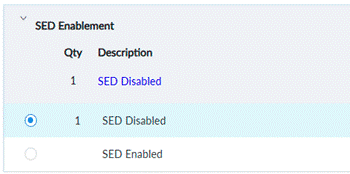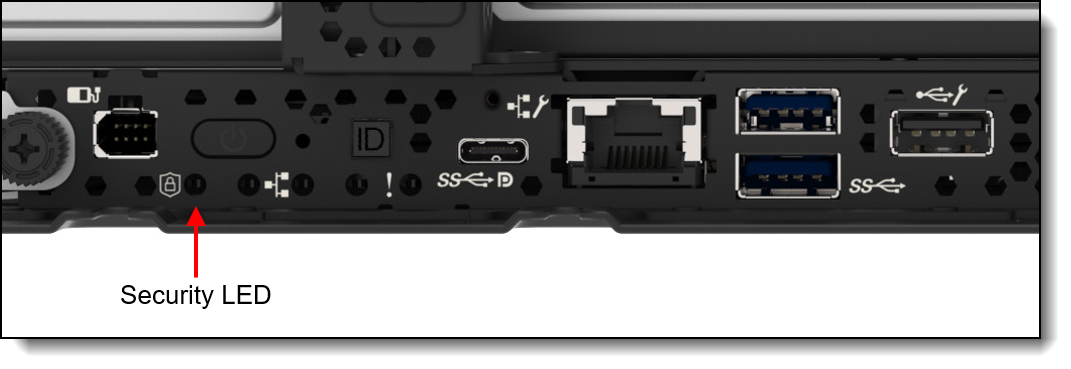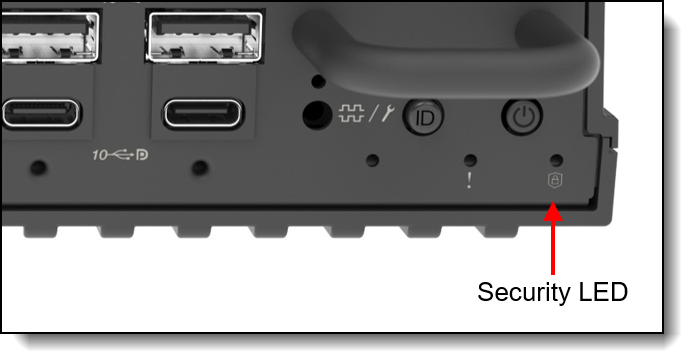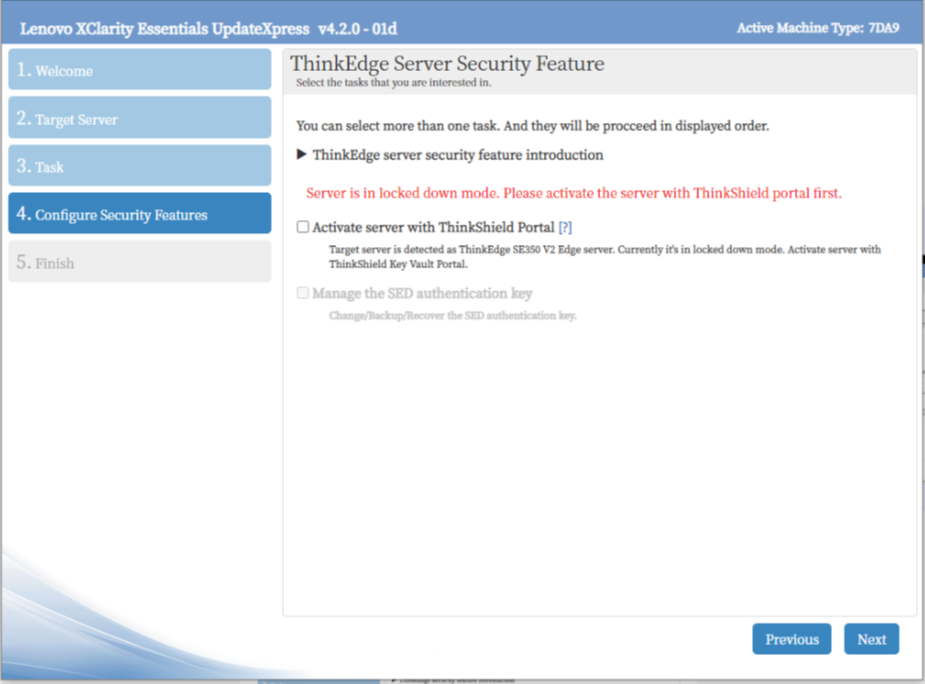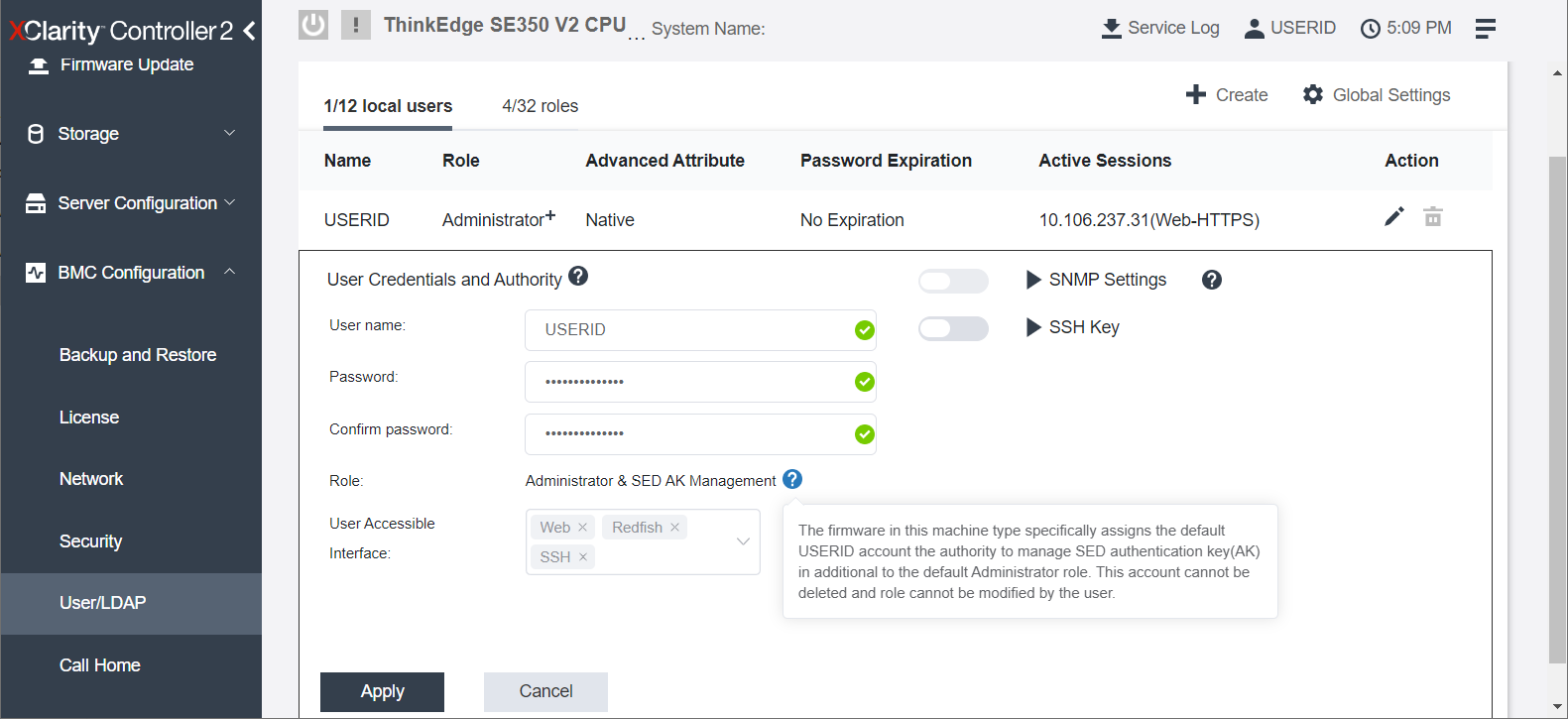Authors
Updated
19 Sep 2025Form Number
LP2189PDF size
42 pages, 11.3 MB- Activation using the ThinkShield Edge Mobile App
- Activation using LXCE UpdateXpress
- SED Drive security and management
- Tamper and Intrusion Detection
- Additional functions in LXCE UpdateXpress
- Additional functions with ThinkShield Key Vault Portal
- Serviceability considerations
- Related links
- Authors
- Related product families
- Trademarks
Abstract
ThinkEdge servers are designed to operate outside of a traditional data center and this environment demands that security is central to the ThinkEdge design, both physical security and security of data. ThinkEdge servers come with a variety of features to help both detect and protect the system from attack. Features such as lockable Security Bezels and Security EIA Brackets, help to ensure the systems remain secure, whilst other technologies such as tamper detection sensors, security processors managing Self-Encrypting Drive keys, as well as unique XCC management functions, ensure the data is never at risk.
Lenovo provides a range of tools to manage these features, ensuring they can be used by all clients no matter their individual deployment situation. Customer can manage using ThinkShield Key Vault Portal, ThinkShield Edge Mobile Management Application and Lenovo XClarity Essentials UpdateXpress.
This document describes the design philosophy of ThinkEdge security, and how customer can manage ThinkEdge security features from ThinkEdge server hardware, firmware, and Lenovo management software. The document assumes some familiarity with Lenovo management interfaces such as System Setup (F1 at boot), the XClarity Controller web interface, and UpdateXpress.
ThinkEdge server support: This document is for ThinkEdge servers with recent firmware levels, as documented in the Firmware versions section, excluding the ThinkSystem SE350 Edge Server. For the SE350 and for other edge servers with older firmware, see the Lenovo Press document ThinkEdge Security for SE350.
Change History
Changes in the September 19, 2025 update:
- Clarified the Device activation section
Introduction
Lenovo ThinkEdge Servers are a family of servers specifically designed to be used as compute endpoints at the edges of your network. They are designed to operate outside of a traditional data center, often in rugged environments. Central to the design is security, to ensure that customer data is secure even in less-controlled environments.

Figure 1. Lenovo ThinkEdge securely connects users to data at the Edge
The key focus of ThinkEdge security is data protection. There are many potential threats to data that are unique to edge environments. The threats include cases of attackers stealing entire ThinkEdge servers with storage media due to the servers’ relatively compact design and their deployment outside of data centers.
In order to protect the data, ThinkEdge servers use Self-Encrypting Drive (SED) technology which encrypts all customer data automatically. There is a key (the SED Authentication Key, or AK for short) which controls access to SED. The ThinkEdge servers carefully protect the SED AK by storing it inside a secure element. The ThinkEdge servers only allow access to the SED AK after the system is properly authorized. Once the system is authorized, the SED AK unlocks the drive and allows the system and data to be accessed. When the ThinkEdge servers detect a tamper event, it locks access to the SED AK until the system is authorized again. If an attacker steals the SED media, since it is encrypted, the attacker cannot read the content.
In addition, the selected ThinkEdge servers contain sensors that further protect customer data against threats after the server is installed at its final location. If these sensors detect that the device is being tampered with, the ThinkEdge server locks the device so that the data becomes inaccessible.
Firmware versions
This Lenovo Press document describes the enhanced security features that are supported by all ThinkEdge servers with the XCC2 (XClarity Controller 2) service processor with firmware versions listed in the table below.
For ThinkEdge servers with firmware older than the versions listed, or for the ThinkSystem SE350 (any firmware version), refer the Lenovo Press document ThinkEdge Security for SE350.
| Server model | Firmware for enhanced security features |
|---|---|
| ThinkSystem SE350 | No support for enhanced security features; Refer to document ThinkEdge Security for SE350. |
| ThinkEdge SE450 | USX381A or later |
| ThinkEdge SE350 V2 | IYX321N or later |
| ThinkEdge SE360 V2 | IYX321N or later |
| ThinkEdge SE455 V3 | All firmware versions support enhanced security features |
| ThinkEdge SE100 | All firmware versions support enhanced security features |
Minimum firmware levels for the Emergency XCC password reset feature are listed in the following table.
| Server model | Firmware for Emergency XCC password reset |
|---|---|
| ThinkSystem SE350 | No support for Emergency XCC password reset; Refer to document ThinkEdge Security for SE350. |
| ThinkEdge SE450 | USX369B or later |
| ThinkEdge SE350 V2 | IYX333C or later |
| ThinkEdge SE360 V2 | IYX333C or later |
| ThinkEdge SE455 V3 | MBX315C or later |
| ThinkEdge SE100 | All firmware versions support enhanced security features |
Data protection and SED key management
ThinkEdge servers support self-encrypting drives (SEDs) for local storage. SED provides benefits by encrypting data on-the-fly at the drive level with no performance impact, by providing instant secure erasure thereby making the data no longer readable, and by enabling auto-locking to secure active data if a drive is misplaced or stolen from a system while in use. These features are essential for many businesses, especially those storing sensitive customer data.
The SED Authentication Key (SED AK) is unique to each SED drive. The SED AK controls access to the data on the SED.
There is established technology to manage the SED AK using a key management server, such as Thales KeySecure. The issue with key management servers is they require network access to access the SED AK., ThinkEdge servers need to operate and access the SED regardless of network availability ThinkEdge servers also need to control the SED access when hardware detects a tamper event.
In order to support such unique requirements of ThinkEdge servers, ThinkEdge server manages SED AK locally. Each ThinkEdge server has hardware secure element, and the SED AK is stored in the secure element,
However, some customers may still prefer to use a key management server or may not require a SED. In order to support both cases, ThinkEdge servers support “SED Enablement” as an option. Customer can select SED enablement from DCSC at ordering as below.
A customer can also enable SED from XCC as shown below, however, once enabled, SED cannot be disabled.
Device ownership
Ownership is one of the most important concepts to review when discussing security. Devices must protect the data when handled by someone with unauthorized access, however, the owner of the device should be able to manage the device with ease. Similarly, devices must protect data when attackers (with unauthorized access) reach the device, whereas the owner (with authorized access), should be able to manage and access the device with ease.
In the case of edge computing, there are differences from servers located in a data center. The IT administrator tends to work in an IT office, far from devices at an edge location. For the edge, devices may be directly shipped to the edge location. In the case of a data center, a single IT administrator will receive hundreds of devices at a single data center, but in the case of edge computing, on-site personnel will receive 1 or 2 devices at hundreds of separate locations. How do we know who the rightful owner of each edge device is?
Defining Device Ownership
The ThinkEdge server owner defines who is able to claim ownership of the server initially and who is able to activate the server initially and, in the event, it is locked down due to a tamper. A major consideration for determining who should own the device is the location of the where the device is being managed from. If the device is being managed from where it is located then the owner is local and if the device is being managed from a remote location, then the device owner is remote.
ThinkEdge servers support XClarity Controller management when device owners are local and ThinkShield Key Vault Portal management when device owners are remote.
XClarity Controller management allows a XCC user with the proper privileges to claim and activate the device. All that is needed is access to the XCC. Special consideration is needed to properly protect the XCC credentials and account when this method is selected.
ThinkShield Key Vault Portal management first requires the Organization to be registered in the ThinkShield Key Vault then it requires the organization's administrator to claim and activate the device using the portal initially. Anytime the device needs to be reactivated a user with a properly privileged portal account must be authenticated to activate the device using any of the supported methods.
Other things to consider when selecting between XClarity Controller management and ThinkShield Key Vault Management is the physical security of the device. If a device is in an insecure location for example and could possibly be stolen or tampered with ThinkShield Key Vault management is a better choice because of the separation of the authentication method required to activate the server and the physical server itself. For example, if a server in an insecure location is stolen and locked down the person who stole the server would not be able to activate the server since they would not have an account in the ThinkShield Key Vault Portal. If XClarity Controller management was selected the person who stole the server may be able to gain access to the XCC account and activate the server and gain access to the data on the device.
ThinkEdge servers support the above two methods to define the ownership of servers and who can manage System Lockdown Control. The first method is called XClarity Controller Managed (feature BYBQ in the DCSC configurator), and the other method is called ThinkShield Key Vault Portal Managed (feature BYBR in the DCSC configurator). Customers can preselect the ownership when ordering their ThinkEdge server in DCSC, as shown below.
Security Considerations for System Lockdown Control
Security considerations for the following situations:
Using XCC for System Lockdown Control
When XCC-based Lockdown Control is selected, the XCC Administrator password becomes particularly important to protect your data in ThinkEdge servers. For example, while ThinkEdge servers can lock down data access when hardware detects tamper event, if you know a XCC Administrator password, you can unlock the system and access the data.
ThinkEdge servers support hardware factory reset by UEFI by selecting BMC Settings > Reset Factory Defaults Setting as shown in the following figures.

Figure 5. UEFI - System Configuration

Figure 6. Reset Factory Defaults
It is very important to understand that when you perform factory reset, the XCC password is reset so then anyone can access the protected data in ThinkEdge servers using the default XCC Admin password. (XCC also supports factory reset but this feature requires the XCC password, whereas factory reset by UEFI does not require the XCC password). In order to prevent from anyone from using UEFI password reset, it is highly recommended to configure a UEFI administrator password. Once defined only users who know the UEFI administrator password are able to access UEFI settings and reset the XCC password by issuing a factory reset.
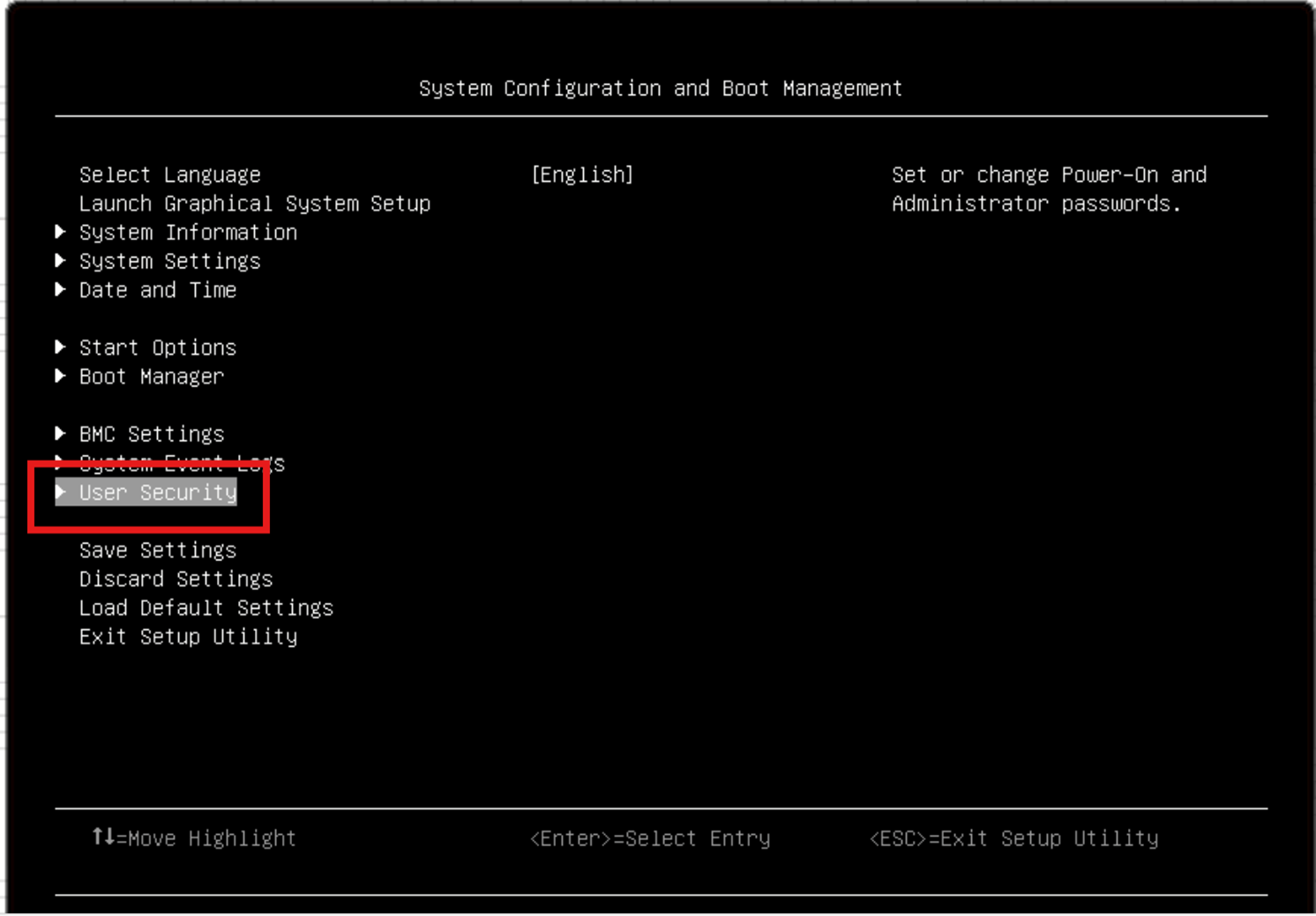
Figure 7. UEFI - System Configuration
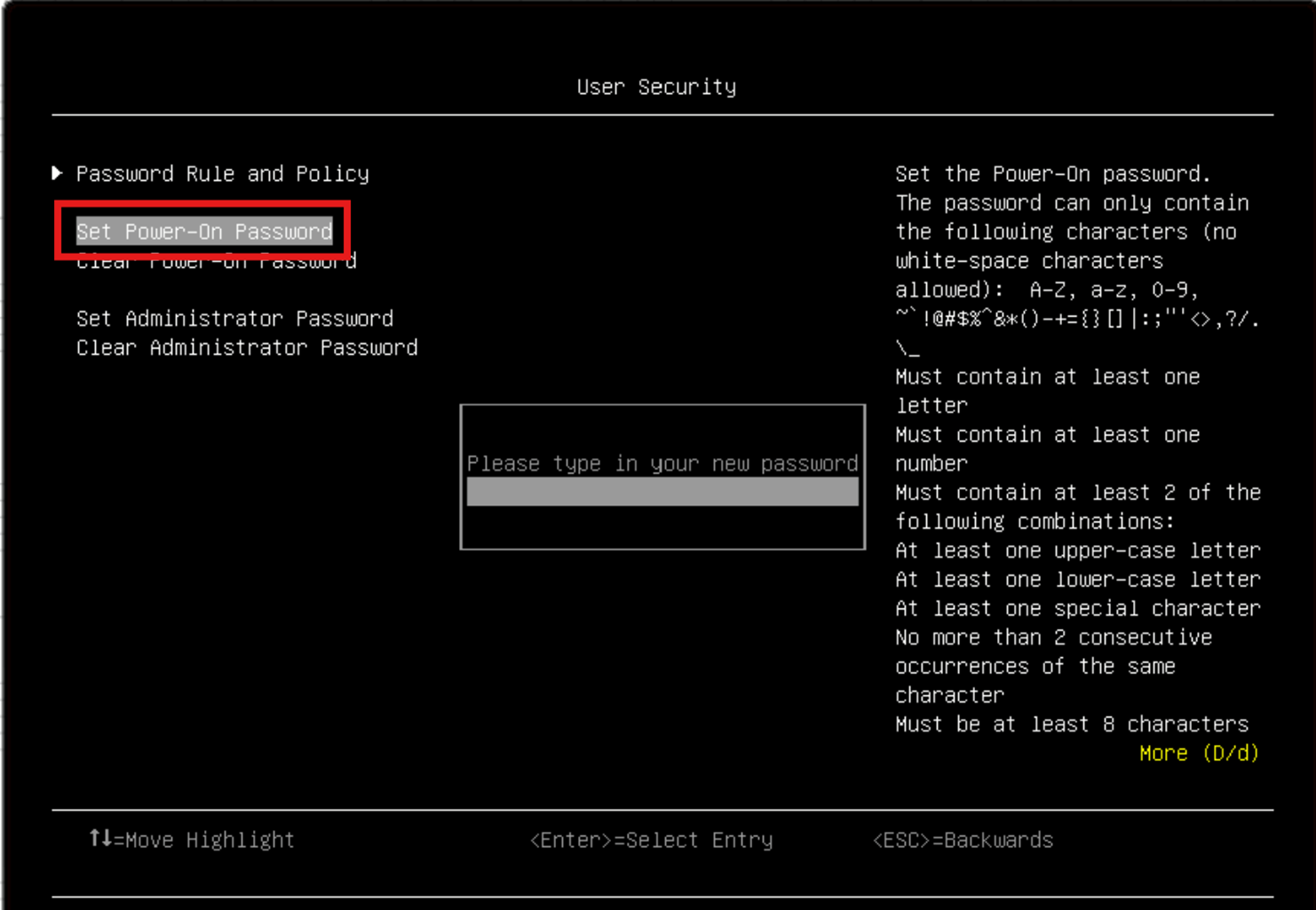
Figure 8. UEFI - User Security
In addition, selected ThinkEdge servers (SE450 and SE455 V3) support an external diagnostics handset for enhanced systems management capabilities. Users can also reset the XCC from the external diagnostics device without providing XCC password.
For SE450 (firmware version USX369B or later) and SE455 V3 (firmware version BX315C or later), the following security settings are adjustable. Make sure to configure the settings to prevent data loss:
- When reverting XCC to default by External Diagnostics Handset, the XCC password will be reset or not. (Default: The XCC password will not be reset.)
- When the XCC password is reset by External Diagnostics Handset or mobile app, the SED AK stored in the server will be cleared or not. (Default: The SED AK will be cleared.)
When a customer sets both XCC password and UEFI administrator password, and then lose both passwords, ThinkEdge servers become inaccessible. In this case, you can reset the passwords securely. See the Emergency XCC password reset section for details. Note that this feature will clear the SED AK stored in the server to protect data from unauthorized access.
Using ThinkShield Key Vault Portal for System Lockdown Control
This ThinkShield Key Vault Portal can be used when the IT department desires to separate the duty of hardware management and security management. The ThinkEdge servers, in conjunction with ThinkShield Key Vault Portal, provide the solution to the problems associated with device ownership, as described in the preceding section. To claim ownership, the IT administrator must register their organization in ThinkShield Key Vault Portal. With this portal, an IT administrator can manage on-site users and devices without needing to be on-site. This option provides stronger security protection and is good option to deploy ThinkEdge servers outside of Data Center type of environment.
The IT Administrator can also link their company’s identity access management (IAM) system with the portal through Active Directory Federation Services (ADFS). This will increase the following:
- Security by ensuring the organization’s authenticity by ADFS.
- Ease-of-use by enabling on-site users to use their company user ID and password to log in to the portal.
When edge users receive a ThinkEdge server, each server comes with a “Secure Activation Code.” This is used to ensure proof of possession of the ThinkEdge server. The edge user can claim the device with the machine type, serial number, and this unique “Secure Activation Code.” The ThinkShield Key Vault Portal can validate the Secure Activation Code which is unique to each device. Therefore, the Portal can claim the device only when the right information is provided. This “claiming” process makes the ownership association between the device and the organization claiming it.
Once claimed, an IT administrator can activate the device for operation. Until this activation process is completed, the ThinkEdge server locks the SED Authentication Key so that data is inaccessible and protected.
Device activation
Activation is a security feature of ThinkEdge servers that ensures that the system delivered from the factory is only used by its intended recipient and that all data and applications remain secure. An IT administrator can activate the server for operation, but until this activation process is completed, the ThinkEdge server locks the SED Authentication Key so that data on the SED drives is inaccessible and protected (called System Lockdown).
Activation status is available from System Lockdown Mode XCC GUI. When system is activated and lockdown is released, the toggle bar shows status “Inactive” as shown in figure 10 (meaning lock down is inactive). When system is not activated and lockdown is effective, the toggle bar shows status active as shows in figure 9 (meaning lock down is active).
Activation method depends on ownership definition of ThinkEdge servers.
In the DCSC configurator during the factory order process, when XClarity Controller Managed is selected under System Lockdown Control (per the figure below, as described in the Defining Device Ownership section), ThinkEdge servers are delivered pre-activated (unlocked).
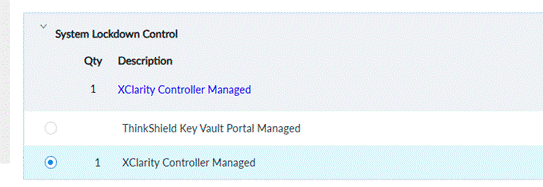
Figure 9. System Lockdown Control
When ThinkEdge servers are deactivated, for example, by tamper event detection, customer can simply activate the ThinkEdge server using XCC (GUI / Redfish API) by toggling the Active slider as shown in the following figure.
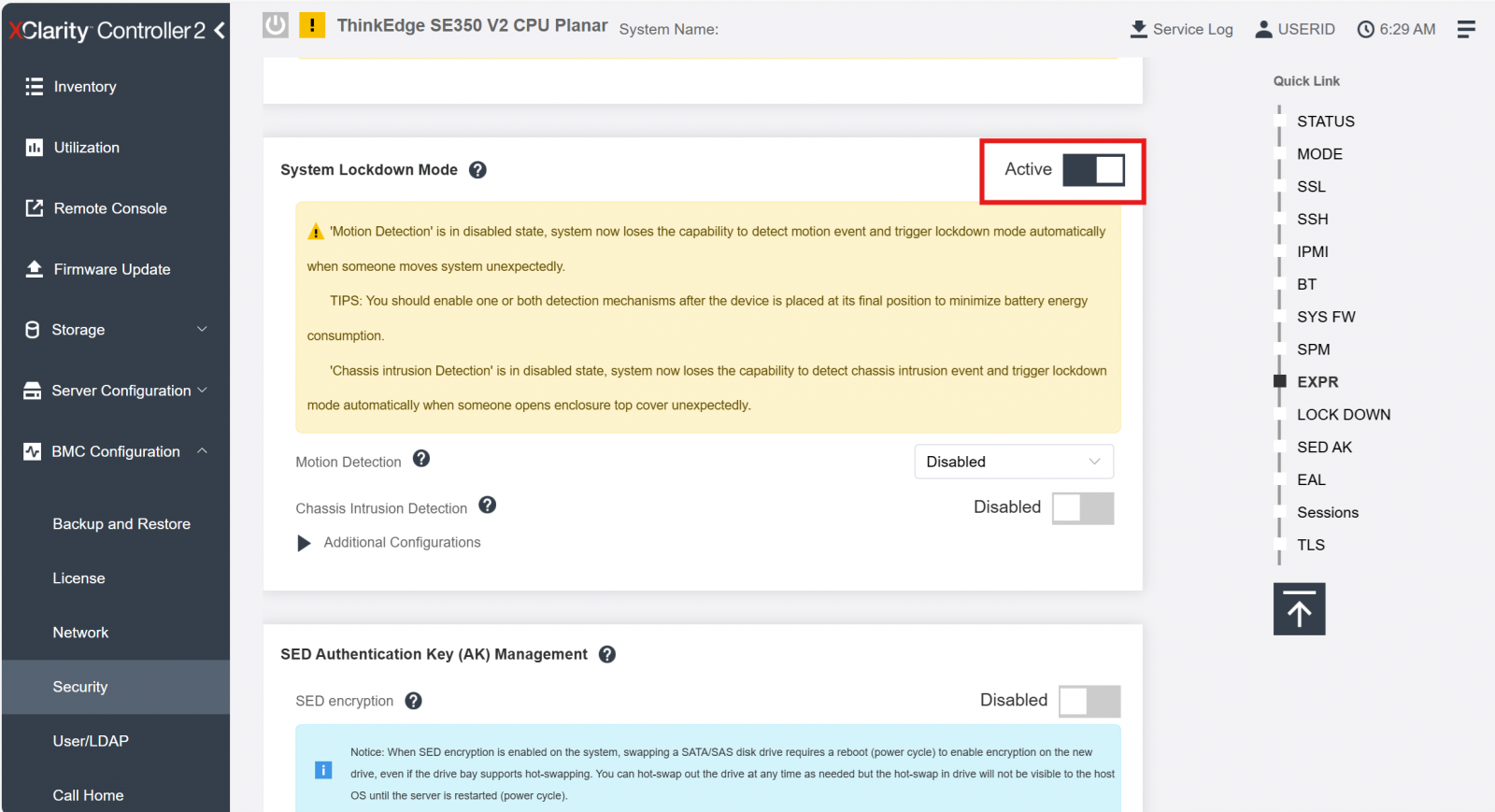
Figure 10. XCC - System Lockdown Mode
After clicking Apply, the system will be activated then unlocked, and the status will be changed to Inactive, as the figure below shows.
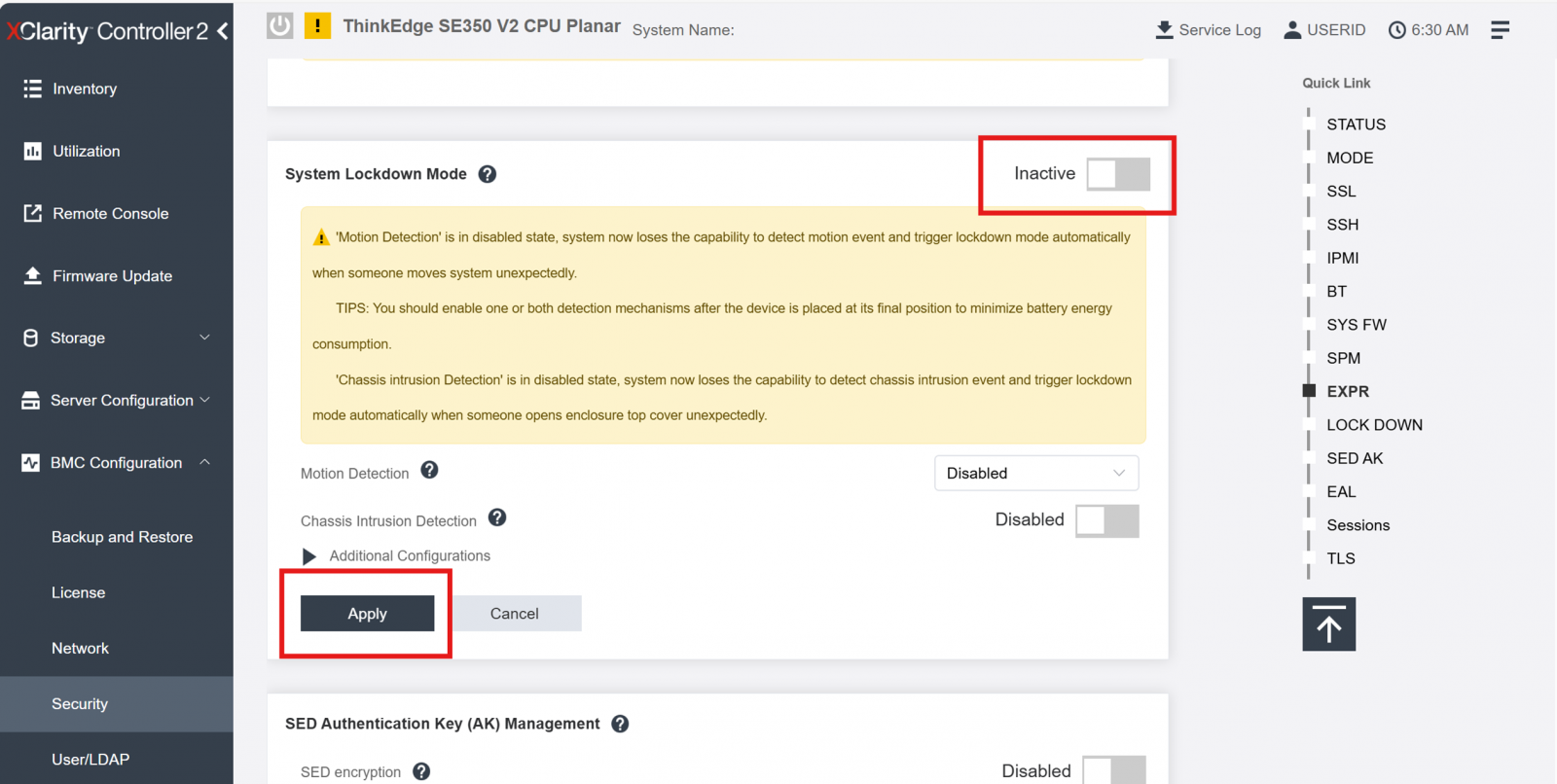
Figure 11. XCC - System Lockdown Mode
In the DCSC configurator, if ThinkShield Key Vault Portal Managed is selected under System Lockdown Control (see the Defining Device Ownership section), ThinkEdge servers are shipped not activated (locked down), and activation is required to unlock.
There are four methods available to activate the device:
- Activation using LXCE UpdateXpress
The first method to activate a server is by using LXCE UpdateXpress. LXCE UpdateXpress is a software utility running on Windows laptop. It provides a GUI based wizard to guide on-site users to activate a ThinkEdge server. In order to activate a server, the user needs to make sure their laptop is in the same network as the server to be activated or connected directly to XCC port of the server with an Ethernet cable.
- Automatic / online activation
If the management port of the edge server is able to connect to Internet, the server can communicate with the ThinkShield Key Vault Portal, and the IT admin can activate the server of lockdown mode directly from the ThinkShield Key Vault Portal.
- Activation using the ThinkShield Edge Mobile Management Application
This method of activation allows an IT administrator to delegate the process to an on-site user (called Edge user in ThinkShield Key Vault portal). In this method the on-site user uses a mobile application to activate the device. To prevent exploitation of the mobile activation process, this method requires that the IT administrator assign the appropriate role to the on-site user in the ThinkShield Key Vault Portal. Once assigned, the on-site user can claim and activate devices using the ThinkShield Edge Mobile Management application (for iOS and Android).
- Manual activation
This method involves both the on-site user and the IT Administrator manually exchanging information. This method is only used in cases where one of the other methods is not possible, such as when networking is neither available nor allowed and only when the end user can communicate by a phone.
When the ThinkEdge server is not activated and is in the locked state, the server interrupts the boot process and displays a warning message “System is locked down and must be activated in order to complete booting” and will wait until the activation / unlocking process is completed as described above.
There are three ways to determine whether a ThinkEdge server is activated or not activated:
- Messages on the UEFI POST screen
- Messages on the XCC login screen
- Status of the Activation LED on the server
The following figure shows the UEFI POST screen of a server that is already activated.

Figure 12. Activated ThinkEdge Server UEFI POST Screen
The following figure shows the UEFI POST screen of a server that is not yet activated.
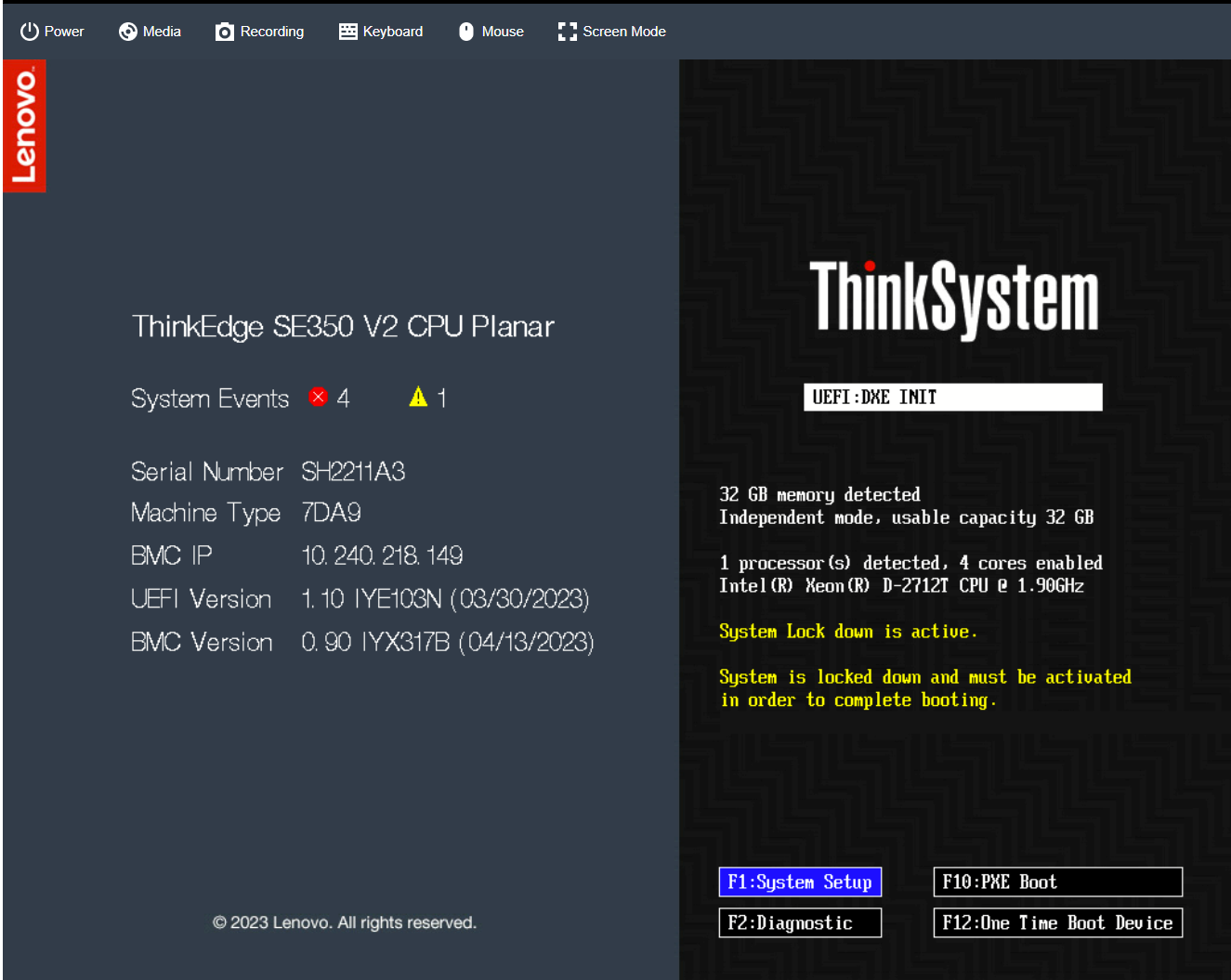
Figure 13. ThinkEdge Server UEFI POST Screen Waiting Activation
The following figure shows the XCC login screen of a server that is not yet activated.
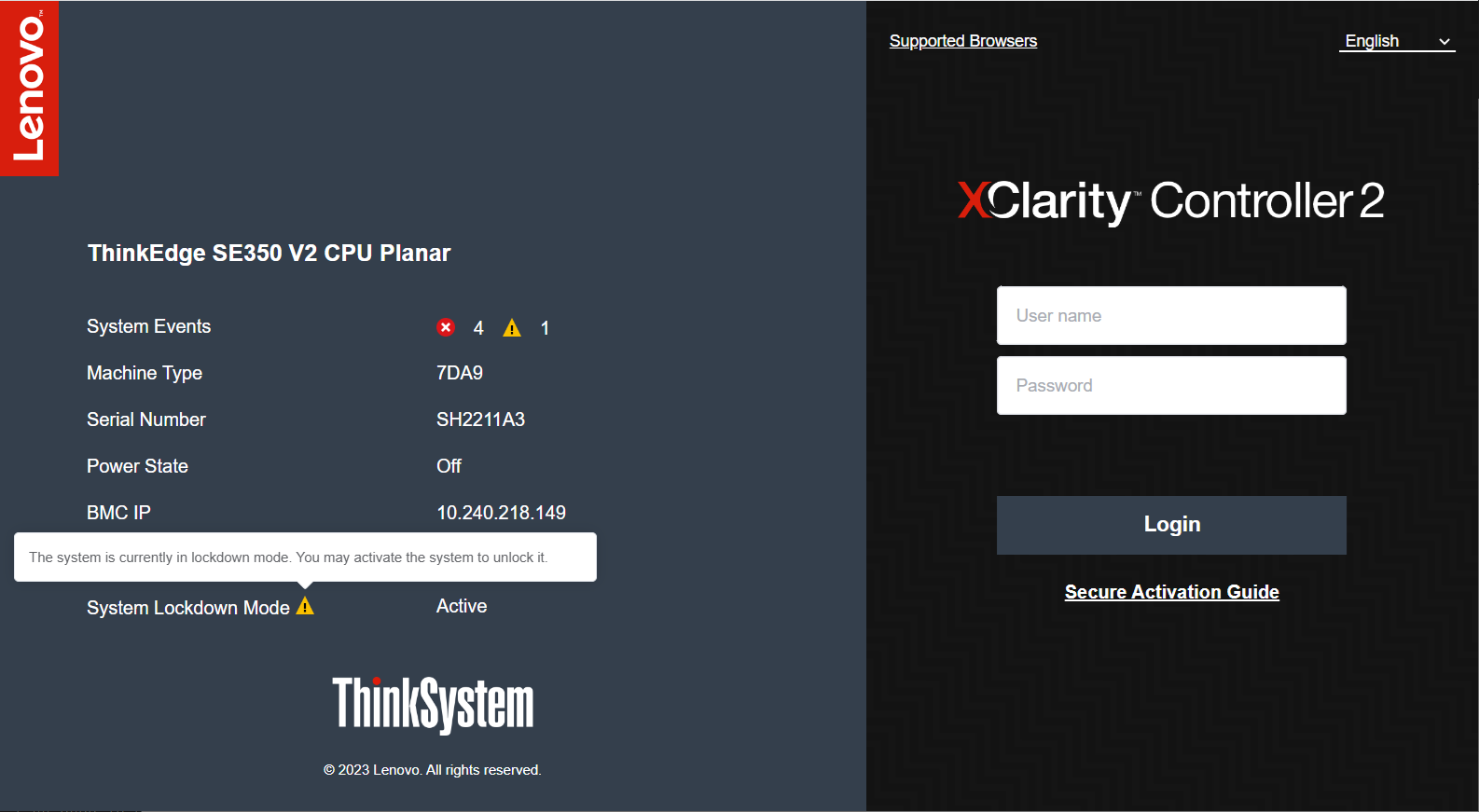
Figure 14. Activated ThinkEdge Server XCC Login Screen
The following figure shows the XCC login screen of a server that is already activated.
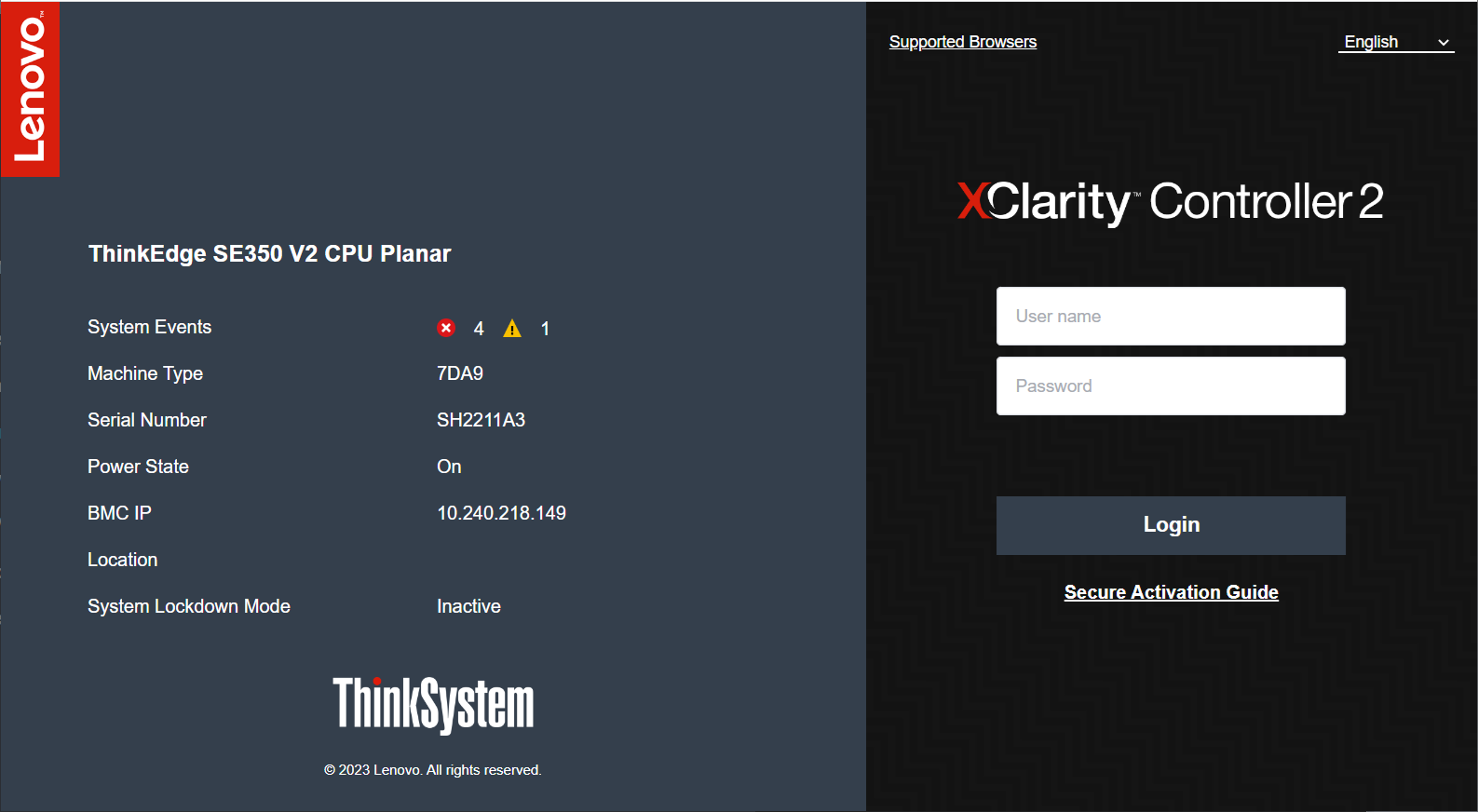
Figure 15. ThinkEdge Server XCC Login Screen Waiting Activation
The Security LED on the ThinkEdge server indicates the status of activation:
- LED is On = SED is enabled, or tamper detection (such as an intrusion sensor) is enabled, and server is activated
- LED is Blinking = Server is in lockdown mode, but server is not yet activated
- LED is Off = SED is disabled, and tamper detection is disabled, and server is activated (or SecurityPack is de-populated setup - SE450 only)

Figure 16. SE450 ThinkShield Activation LED
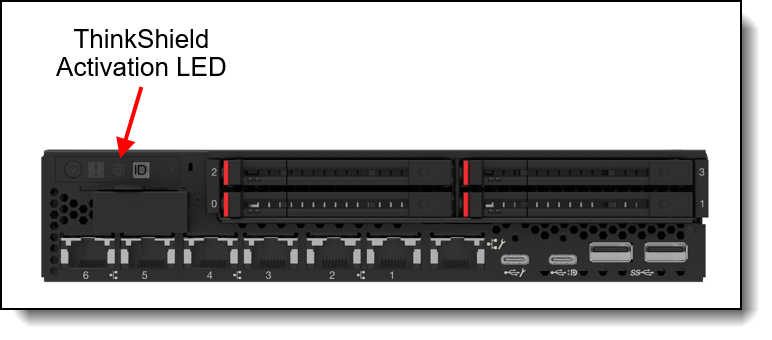
Figure 17. SE350 V2 ThinkShield Security LED
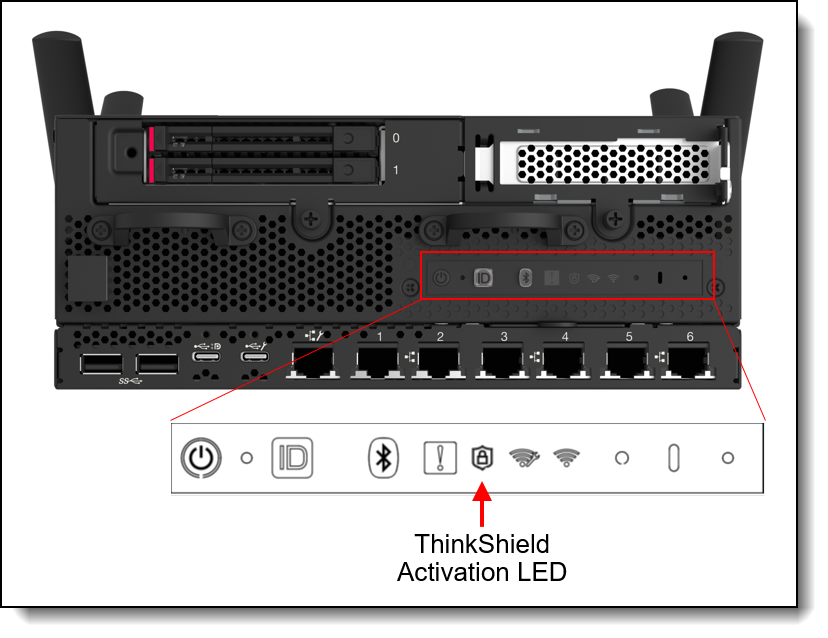
Figure 18. SE360 V2 ThinkShield Security LED (Front)
Checking System Lockdown Control in XCC
It is possible to determine the Activation Method that a Server is shipped and configured with using XClarity Controller. Once you login to the XCC web interface as an Administrator, the Home Page shows the current System Lockdown Mode (Active or Inactive) and the System Lockdown Mode Control (XClarity Controller or ThinkShield Portal), as shown in the following figures.
The following figure shows XCC as the System Lockdown Mode control.
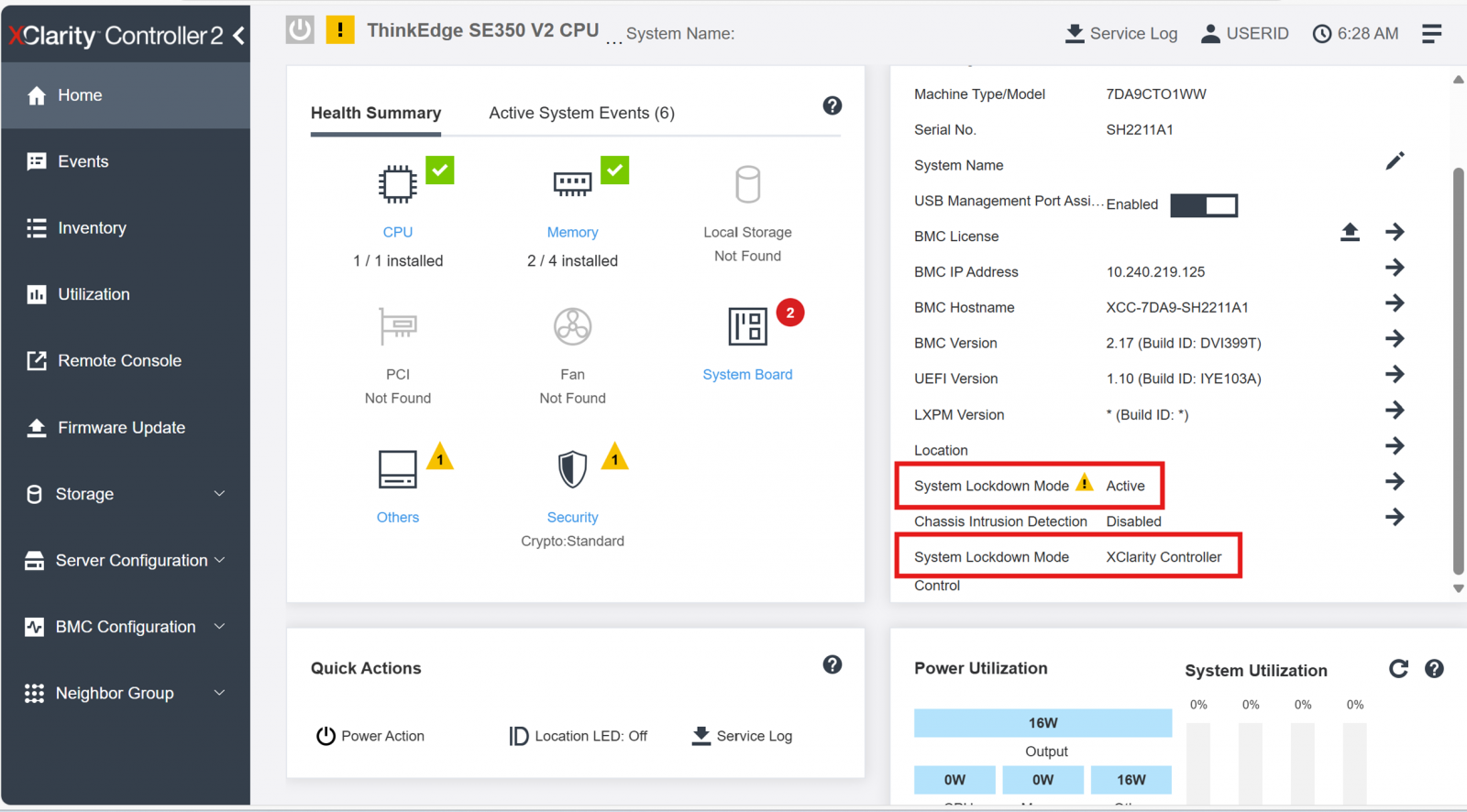
Figure 21. XCC Home showing XCC as the System Lockdown Mode control
The following figure shows ThinkShield Portal as the System Lockdown Mode control.
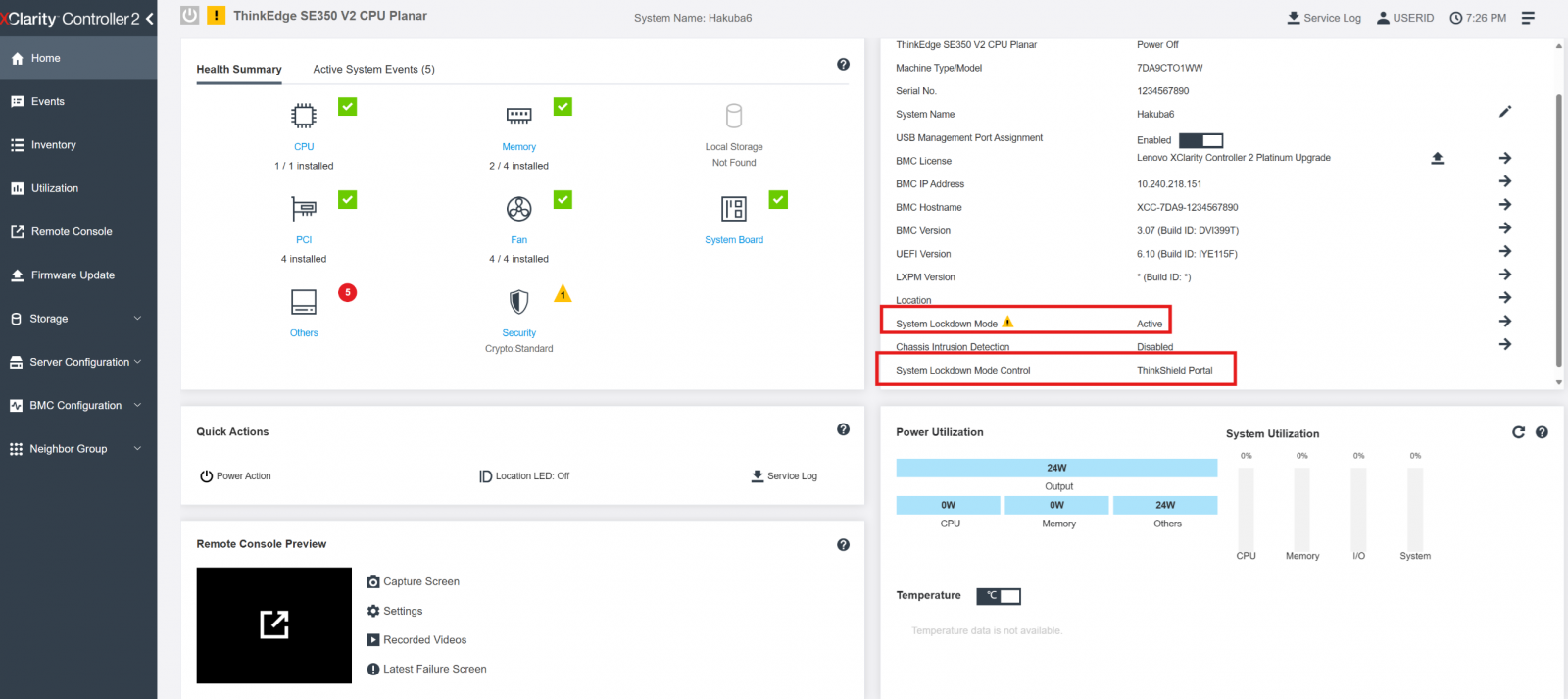
Figure 22. XCC Home showing ThinkShield Portal as the System Lockdown Mode control
ThinkShield Key Vault Portal
The ThinkShield Key Vault Portal is a web application that is designed to manage organizations, users, and devices when ThinkShield Key Vault Based Lockdown Control was selected.
The first action after ordering the first ThinkEdge server is to create a new organization where all the devices belong. To create the new organization, the administrator needs to create a Lenovo ID (see https://passport.lenovo.com) if they don't already have one.
When creating a new organization, the administrator can choose to authenticate their organization’s users by linking their directory services using Active Directory Federation Services (ADFS) (recommended) or by using the Lenovo ID identity authentication services.

Figure 23. Creating new organization using ThinkShield Key Vault Portal

Figure 24. Adding new user using ThinkShield Key Vault Portal
After creating a new organization, the administrator can define role-based access control for users who need access to their ThinkEdge servers. It is particularly important to follow the principal of least-privilege when assigning roles to users.
The following table shows a high-level view of the roles vs. functions. Detailed permissions can be found in the application user manuals.
In addition to manually adding new users, when Active Directory Federation Service (ADFS) is in use and an unregistered user logs into Portal, the Portal will automatically register the user, however, only the Base user role (read-only) will be assigned. A Base user cannot perform any operation by default, so the IT administrator needs to change the role appropriately. From ThinkShield Key Vault Portal, a user with an appropriate role can manage users and ThinkEdge Servers.
Activation using the ThinkShield Edge Mobile App
Considering ease-of-use for non-IT skilled users at edge locations, and given that the number of devices to manage at the edge may be smaller, the ThinkEdge Server can be activated by the ThinkShield Edge Mobile Management app. The mobile app can be downloaded from major Android stores (Android) and from the Apple App Store (iOS).
The mobile app can interface with each ThinkEdge server in one of two ways:
- Physical connection to the dedicated USB service port on the front of the server
- Bluetooth (when wireless option is selected)
The USB service port is indicated with the management symbol ![]() as shown in the following figures.
as shown in the following figures.

Figure 25. SE450 dedicated service USB Type-A port
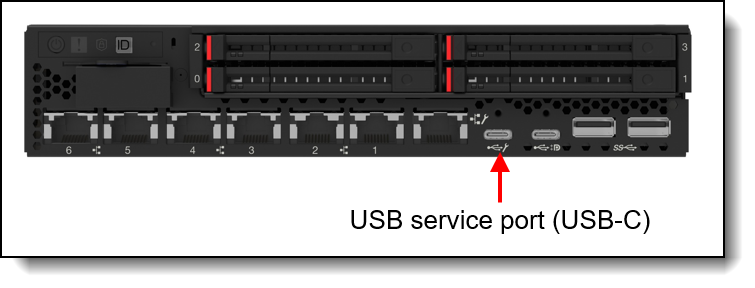
Figure 26. SE350 V2 dedicated service USB Type-C port
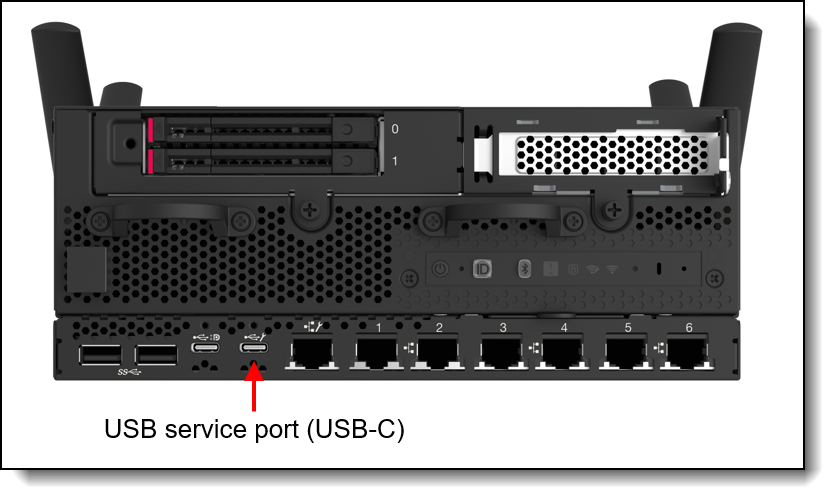
Figure 27. SE360 V2 dedicated service USB Type-C port

Figure 28. SE455 V3 dedicated service USB Type-A port

Figure 29. SE100 service USB Type-C port (rear of server)
On-site users (Edge Users) first need to be registered and provided the proper role by the IT administrator (Organization Admin) and prior to access, they need to login to the mobile app. A registered Edge user can use the mobile app to claim and to activate the devices.
The process to activate a ThinkEdge server using the Mobile app is shown in the following figure.
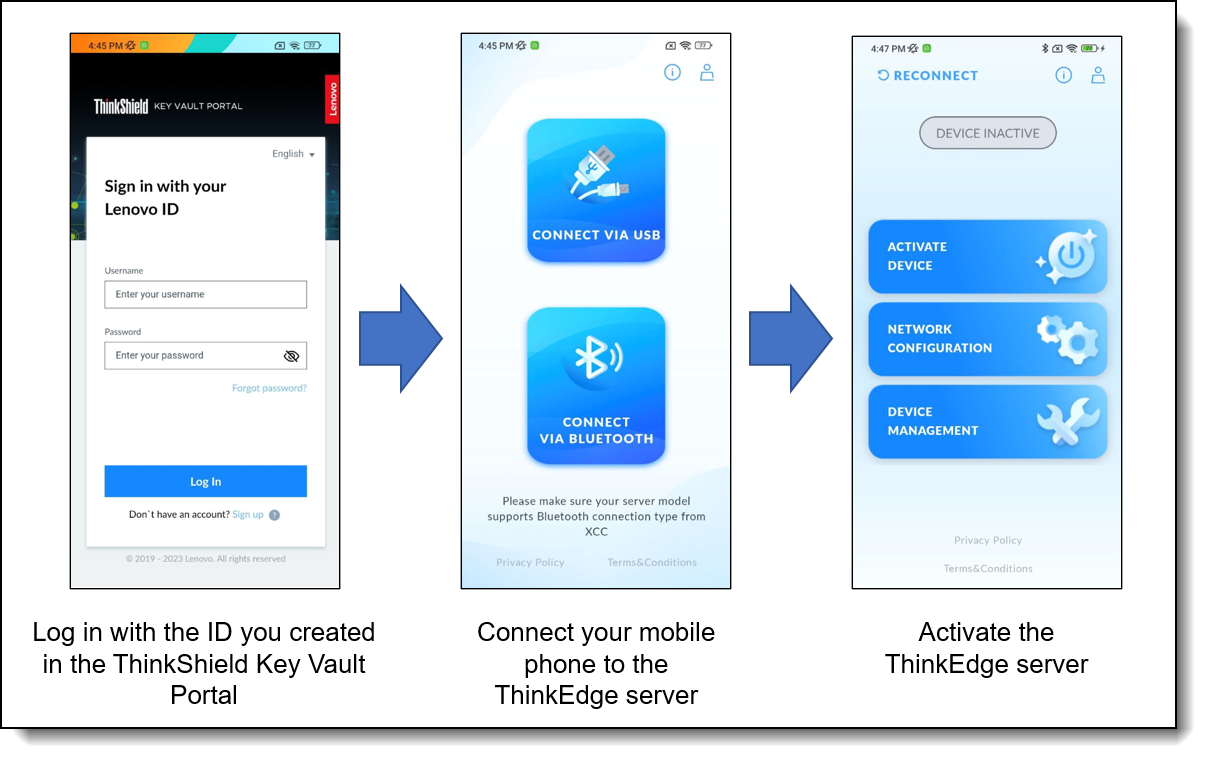
Figure 30. Activation flow using the ThinkShield Edge Mobile Management App
Activation using LXCE UpdateXpress
LXCE UpdateXpress can be downloaded from the UpdateXpress web page:
https://support.lenovo.com/us/en/solutions/ht115051-lenovo-xclarity-essentials-updatexpress
To activate ThinkEdge server in locked-down mode with LXCE UpdateXpress, connect your laptop to the management network or connect directly to the server’s Remote Management port (XCC) with an Ethernet cable, and login to XCC as a user with Administrator permissions.

Figure 31. Connecting LXCE UpdateXpress to the ThinkEdge server
Activation of ThinkEdge server is part of functions to configure security feature on ThinkEdge server in LXCE UpdateXpress. If server’s system lockdown control is managed by ThinkShield Key Vault Portal Managed, user has to be authenticated as member of organization owning that server in ThinkShield Key Vault Portal as the first step of server activation. Refer to ThinkEdge sever security features on the Lenovo Docs site for details.
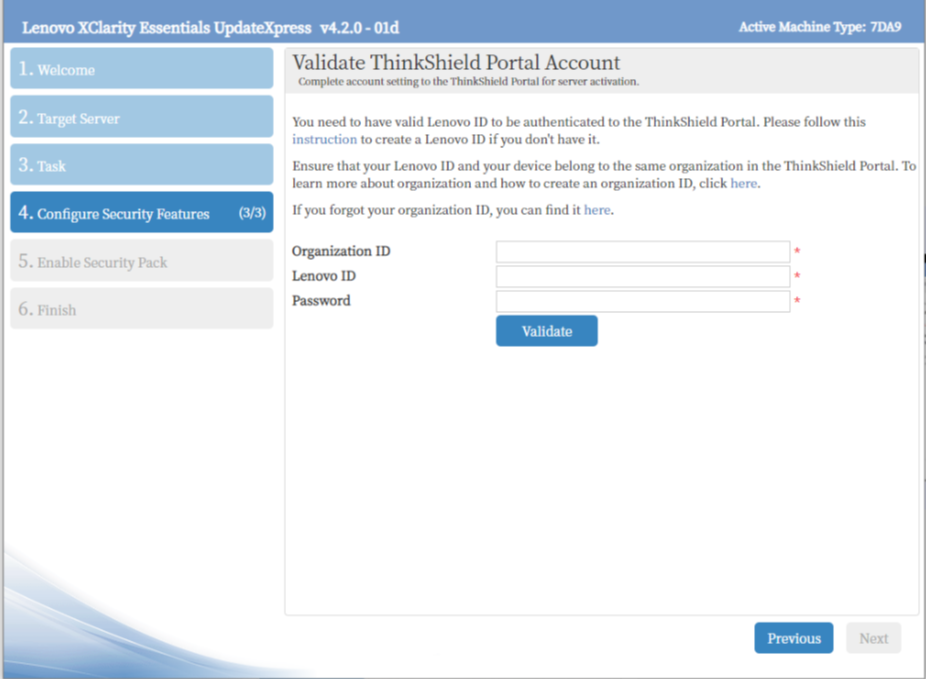
Figure 32. Validated as server’s owner in ThinkShield Key Vault portal
SED Drive security and management
ThinkEdge servers support SED drives for local storage. Self-encrypting drives (SEDs) provide benefits by encrypting data on-the-fly at the drive level with no performance impact, by providing instant secure erasure thereby making the data no longer readable, and by enabling auto-locking to secure active data if a drive is misplaced or stolen from a system while in use. These features are essential for many businesses, especially those storing sensitive customer data.
The SED Authentication Key (SED AK) is unique to each SED drive and Lenovo does not retain it. The SED AK controls access to the data on the SED. The IT administrator should make a backup of the SED AK for assurance of business continuity.
The ThinkEdge servers also support an auto SED AK backup feature as long as one of the following specific installed components is healthy:
- SE450: Either of these, depending on which is installed:
- Firmware and TPM 2.0 Security Module
- Firmware and Root of Trust Security Module
- SE350 V2: Either of these, depending on which is installed:
- 4x 10/25Gb, 2x 2.5Gb (TSN) I/O Module
- 4x 1Gb, 2x 2.5Gb (TSN) I/O Module
- SE360 V2: Either of these, depending on which is installed:
- 4x 10/25Gb, 2x 2.5Gb (TSN) I/O Module
- 4x 1Gb, 2x 2.5Gb (TSN) I/O Module
- SE455 V3:
- Security mezzanine card (TPM / RoT)
- SE100
- PCIe expansion riser card (Note: When SE100 is configured without PCIe expansion kit, SE100 does not take an automatic backup of the SED AK)
The automatic backup can be used to restore the SED AK in cases of hardware failure. This is only possible if both SED and above component are healthy. In this case, they can be installed into another ThinkEdge server, and the SED AK can then be restored. It is still imperative to make your own backup of the SED AK in cases where the above component is not healthy.
The following figure shows how you can use the XClarity Controller XCC web interface to backup your SED AK.
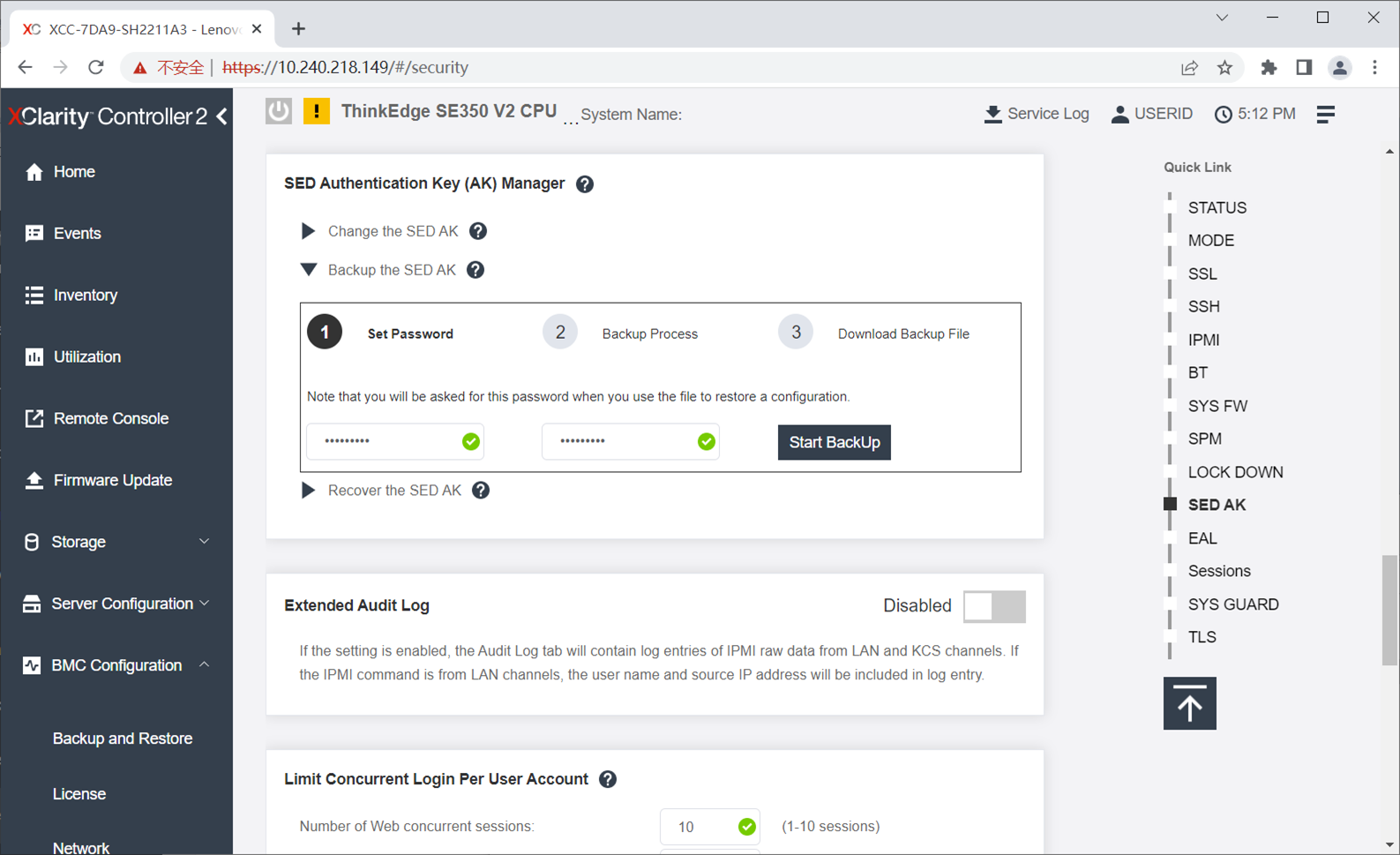
Figure 34. Backing up the SED Authentication Key using XCC
If sharing storage media across multiple ThinkEdge servers, a passphrase-based SED AK can be used instead of a random SED AK (the default). With the same passphrase, multiple ThinkEdge servers can share SED media. Changing to a passphrase can be performed via XCC as shown in the following figure.
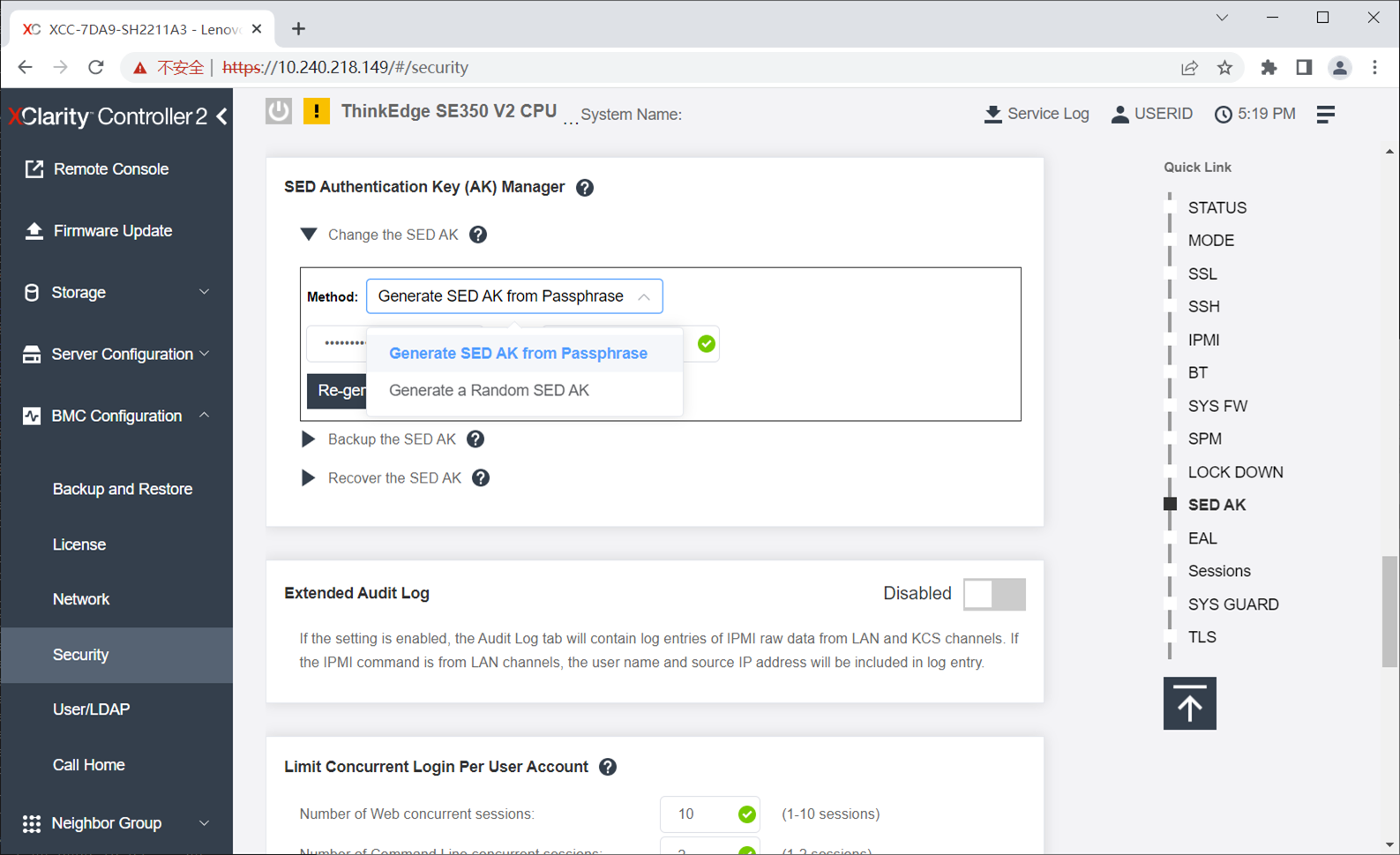
Figure 35. Changing SED AK to a Passphrase using XCC
The SED AK operations are very security sensitive; as a result, the XCC in ThinkEdge servers supports two administrator levels:
- Administrator
- Administrator+
When customer logs in ThinkEdge servers, the default user ID has Administrator+ privilege level. This is the user ID when customer first logs in with default ID / Password. Customers can create other users with other privilege levels, however, one ThinkEdge server can support only one Administrator+ privilege user. Only Administrator+ user (who is default user of local XCC) can manage the SED AK restore operation including to restore SED AK from automatic back up.
When the administrator first logs in to XCC in the ThinkEdge server, only the Administrator+ user (USERID) is registered as shown below.
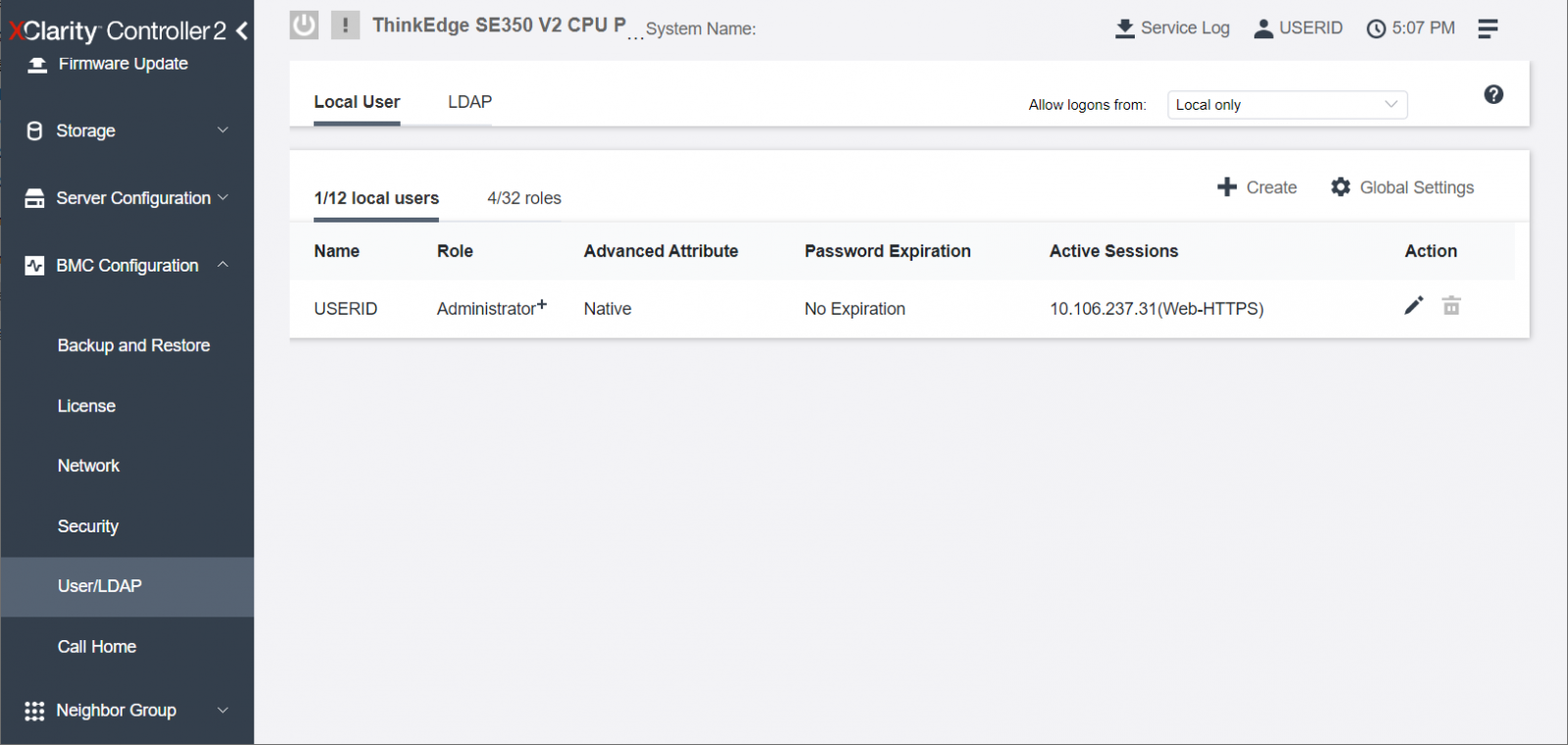
Figure 36. Default Administrator+ privilege user ID registered in ThinkEdge Servers
The administrator can create additional users, such as adding a user with Administrator privileges, as shown below.

Figure 37. Administrator and Administrator+ ID registered in ThinkEdge Servers
For the account with Administrator+ privilege, the administrator can perform SED AK restore operation as indicated below.
Tamper and Intrusion Detection
Each ThinkEdge server has multiple sensors to detect tamper events to lock access to the SED.Each sensor can be configured using XCC, LXCE, LXCA, or the Redfish API. Since all sensors are disabled by default, be sure to enable and configure the sensors to initiate tamper event detection based on your needs.
Supported sensors used to lock SED drives are as follows:
- SE450: Intrusion sensor
- SE350 V2: Intrusion sensor, advanced motion detection sensor
- SE360 V2: Intrusion sensor, advanced motion detection sensor
- SE455 V3: Intrusion sensor
- SE100: Intrusion sensor
All ThinkEdge servers support the intrusion sensor which can detect the opening of the top cover (top and bottom cover in case of SE360 V2). The SE350 V2 and SE360 V2 supports an advanced motion detection sensor where the user can define the motion event by the number of step counts which is nearly equal to the distance of movement.
The ThinkEdge SE350 V2, and SE360 V2 also support the ThinkEdge Anti-tampering Keylock Kit (it was also called as Tamper Detection Kit with the Security Lock option). When those options are selected, an intrusion event triggered by opening the top or bottom cover occurs only when the Kensington lock is attached (SE350 V2) or when the chassis is key locked (SE360 V2).
When the Kensington lock is removed (SE350 V2) or chassis key is unlocked (SE360 V2), top-cover access is permitted, the tamper event will not be triggered.
Additional functions in LXCE UpdateXpress
In addition to activating ThinkEdge servers, LXCE UpdateXpress can also be used to configure other security features in ThinkEdge server listed as below:
- Claim ThinkEdge servers in ThinkShield Key Vault Portal
- Configure Security Sensors for tamper detection in ThinkEdge servers.
- Promote System Lockdown Control from XClarity Controller managed to ThinkShield Key Vault Portal managed.
- Manage (change, backup, and restore) SED authentication keys (requires Admin+ user privileges in XCC)
For the SE350 V2 and SE360 V2, Lenovo XClarity Essentials UpdateXpress provides a new feature to convert a system lockdown control from XCC managed to ThinkShield Key Vault Portal. This delayed promotion will support the case when customers need to access ThinkEdge server without device on boarding, for example, to install and configure software servers at a secure location, then deploy fully secured ThinkEdge servers to an unsecured location after promoting them to Security Pack Enabled.
Note: Once System Lockdown Control in a ThinkEdge server is “promoted” from XClarity Controller managed to ThinkShield Key Vault Portal managed, it cannot be “demoted” back to XClarity Controller managed.
These functions can be accessed from “Configure Security Features on ThinkEdge server” from the task main menu in LXCE UpdateXpress. Please refer to ThinkEdge sever security features in Lenovo Docs.
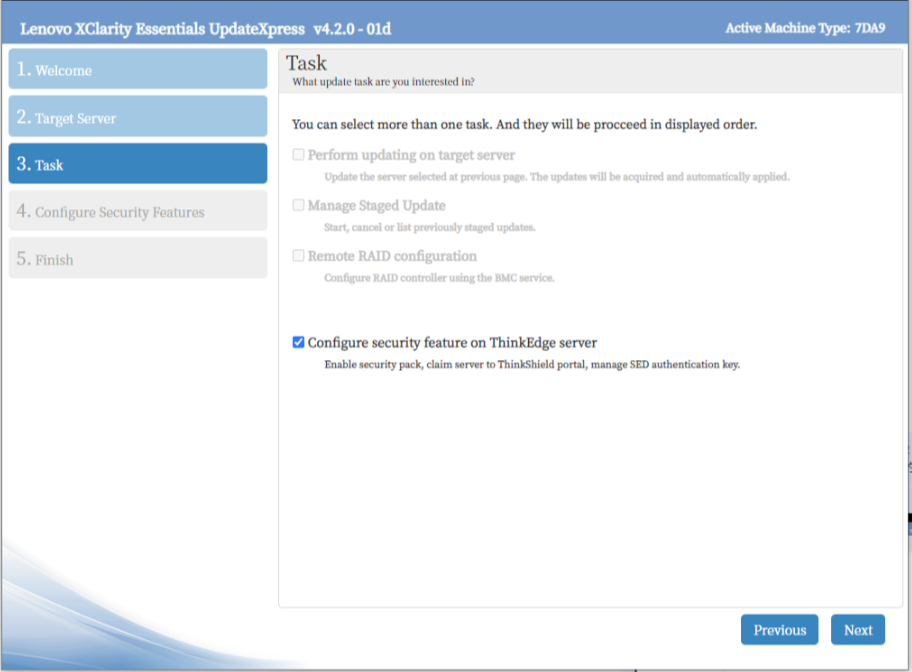
Figure 40. LXCE UpdateXpress Task menu
The following figure shows details functions in LXCE UpdateXpress for security management of ThinkEdge servers.
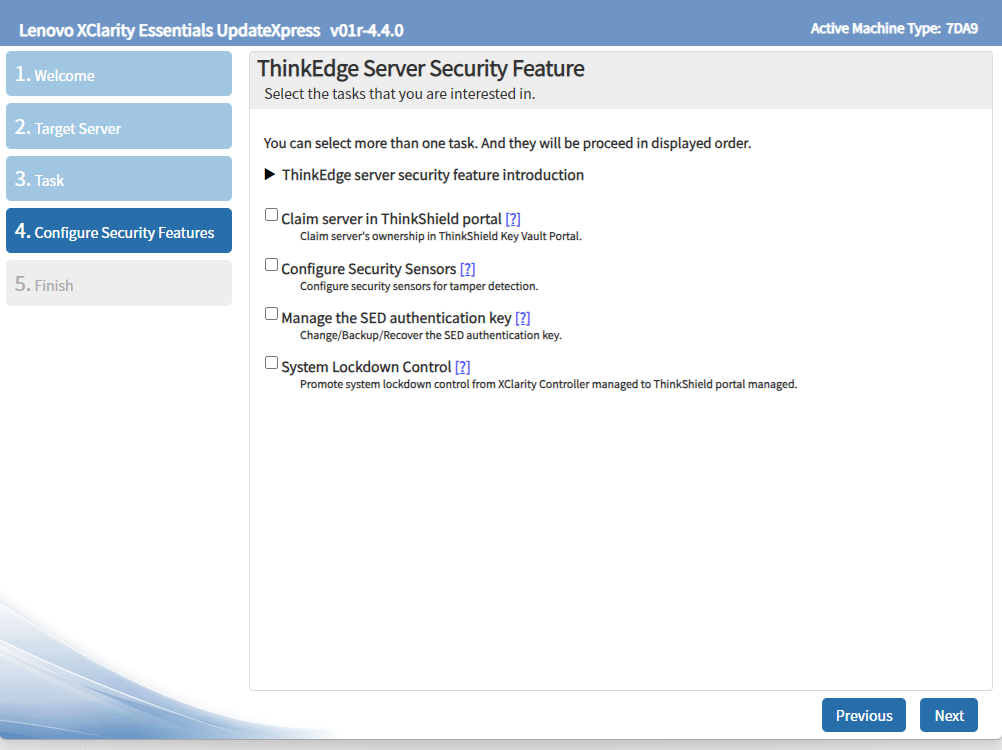
Figure 41. Additional functions in LXCE UpdateXpress for ThinkEdge server securities
Additional functions with ThinkShield Key Vault Portal
ThinkShield Key Vault Portal can also support more advanced management features.
- Viewing all devices owned by an organization
- Viewing all users
- Manual claiming
- Manual activation
- Bulk user registration and server claims
- Transferring ownership
- Emergency XCC password reset
Viewing all devices owned by an organization
The Portal can show all claimed and activated ThinkEdge Servers owned by the organization, as shown in the following figure.

Figure 42. Displaying ThinkEdge server information under the organization
Viewing all users
ThinkShield Key Vault Portal can also be used to show the users and their roles that belong to the organization.

Figure 43. Displaying user information belongs to the organization
Manual claiming
When it is more appropriate to minimize activation effort by on-site personnel, the customer can also select automatic activation. Prior to automatic activation the administrator must manually claim each device. For this they need on-site user to provide them the Secure Activation Code.
The Secure Activation Code is physically located on the server:
- Printed on the pull-out information tab at the front of the server
- Printed on a sticker on the system board
- Printed on the activation flyer that ships with the server
If none of these is accessible, the administrator can also retrieve an activation code from ThinkShield Edge Mobile Management App or by using IPMI command to XCC. For details about using IPMI, see Lenovo Support Tip HT10992.
The secure activation code is located either on the pull-out tab or on the system board, adjacent to the processor.
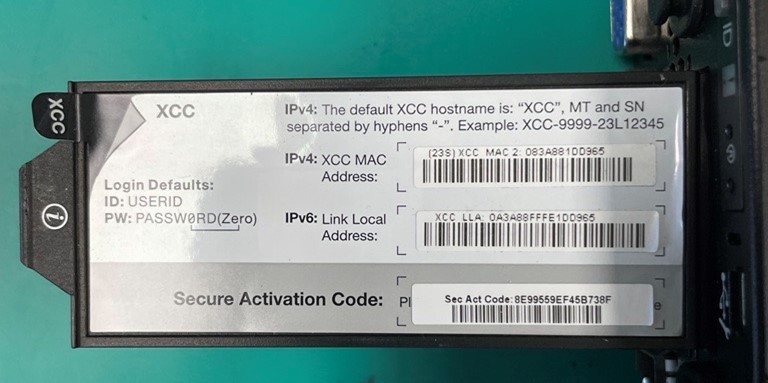
Figure 44. Secure Activation Code from the pull-out information tab
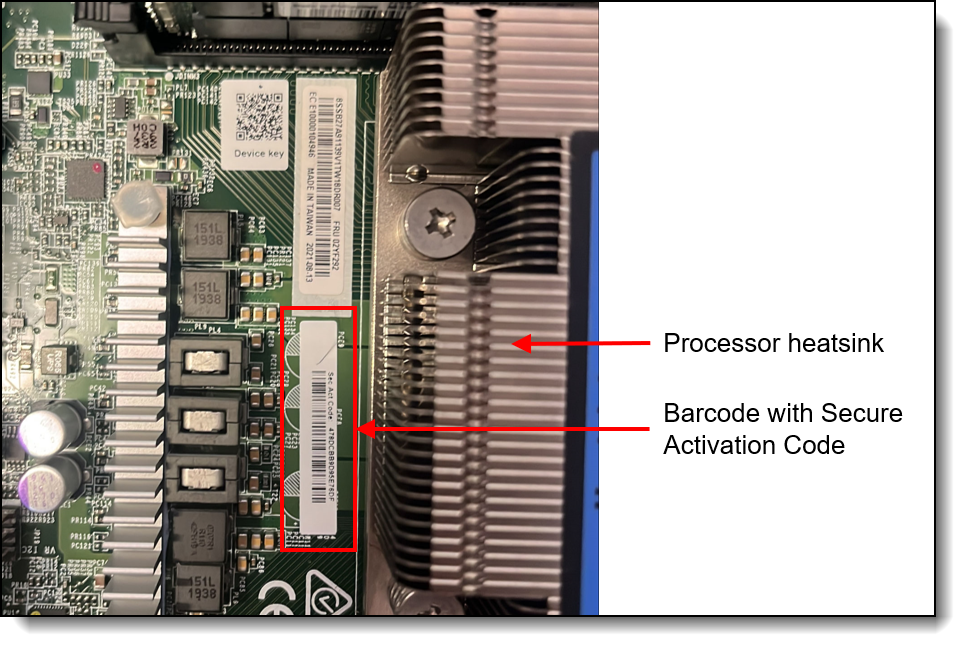
Figure 45. Secure Activation Code in bar code from the system board
The administrator will also need the machine type and serial number of the server. These are printed on a label on the server.
Enter the secure activation code, machine type, and serial number into the ThinkShield Key Vault Portal via Device Manager > Devices > Claim, as shown in the following figure, then click Submit.
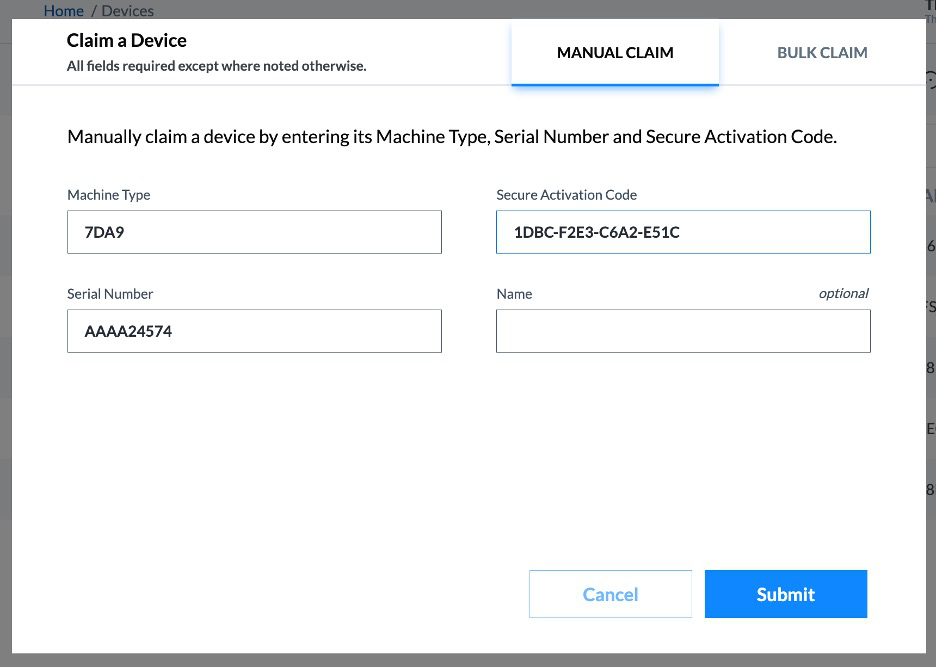
Figure 46. Claiming a ThinkEdge Server
Now select the new server and click the Activate button as shown in the following figure. The ThinkShield Key Vault Portal will update device status from Pending to Ready for Activation.
The last step is to connect the BMC Ethernet port of the ThinkEdge server to the Internet so it can communicate with the ThinkShield Key Vault portal, and then power on the server. The ThinkEdge server will communicate with ThinkShield Key Vault Portal, and the server will be activated automatically.
Tip: If the ThinkEdge server was powered on prior to connecting the BMC to the Internet you many need to power it off and back on again for activation to occur.
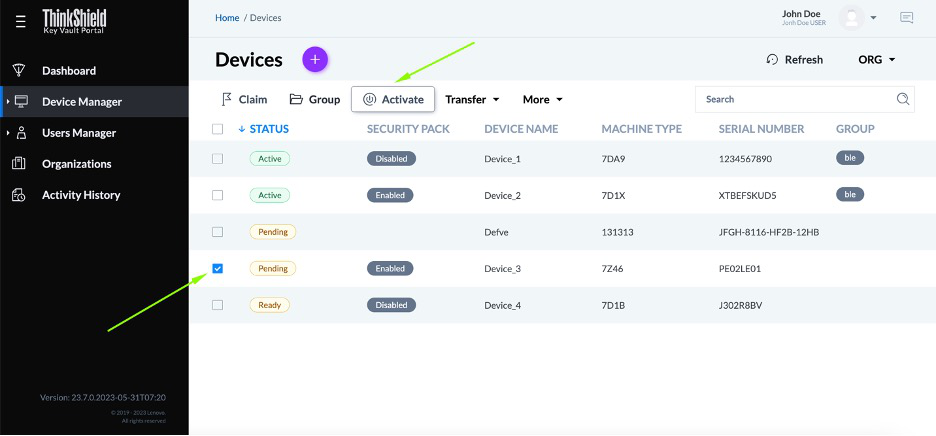
Figure 47. Activating a ThinkEdge Server
Manual activation
When the local admin in the edge location is unable to activate the ThinkEdge server via an Internet connection (automatic activation, or through the use of LXCE UpdateXpress or the ThinkShield Edge Mobile Management App), another approach is a manual method where the local admin manually enters the required information from XCC into ThinkShield portal.
With manual activation, the local admin uses XCC on the ThinkEdge server to obtain the challenge information. This information is then entered into the ThinkShield Portal, which then provides a response code. The local admin then enters the response information to XCC, which will activate the edge server. The exchange of challenge and response can be performed locally by a single person or remotely by an on-site person and a remote admin.
For more information, see the ThinkShield Key Vault Portal User Guide. The links to the user guide and troubleshooting guide are listed in the Related links section.
Bulk user registration and server claims
When the administrator needs to register multiple users at the same time or to claim multiple ThinkEdge servers at the same time, the administrator can enter the user information (e.g. name, email address, role) or server information (e.g. MT/SN, activation code) into a CSV file and upload that file to the ThinkShield Key Vault Portal.
For more information see the ThinkShield Key Vault Portal Web Application User Guide. The link for the guide is in the Related links section.
Transferring ownership
If a customer needs to transfer the ownership of a ThinkEdge server to another organization, the ThinkShield Key Vault Portal can be used to execute a secure device transfer. This method avoids the risk and effort of re-claiming ThinkEdge servers.
First, the sender selects the ThinkEdge servers they wish to transfer using the ThinkShield Key Vault Portal. Once selected, they initiate the transfer process. The ThinkShield Key Vault Portal will generate a CSV file containing the selected ThinkEdge server information which the sender downloads. When the sender downloads the file, the ThinkShield Key Vault Portal provides a passphrase which will expire in 24hours. Then the sender will share the CSV file and the passphrase securely to the receiver. The receiver then uploads the CSV file and provides the passphrase, the ThinkShield Key Vault portal verifies the passphrase and finally transfers ownership of ThinkEdge servers from the sender to the receiver.

Figure 48. Transferring multiple ThinkEdge servers by CSV file with secure one-time password
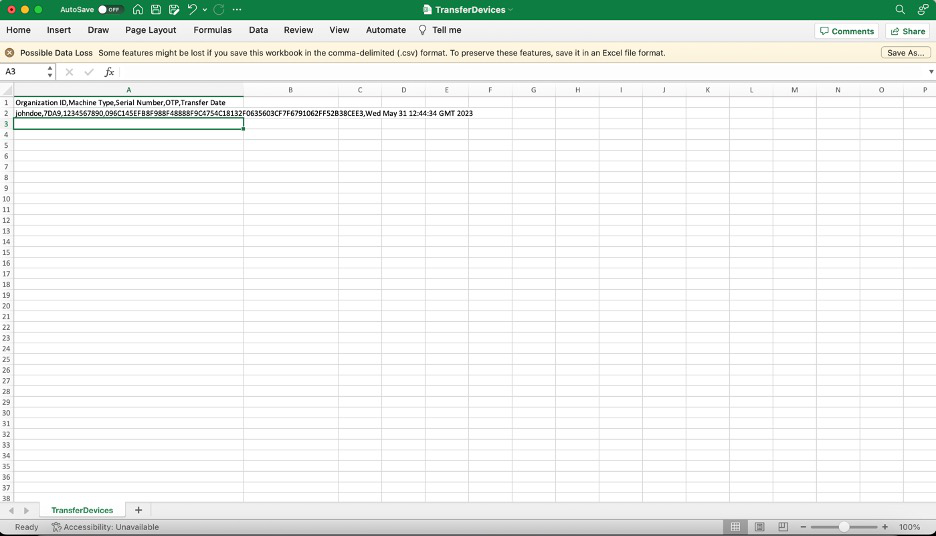
Figure 49. Device transfer CSV file example
Emergency XCC password reset
Firmware requirements: The Emergency XCC password reset feature has minimum firmware requirements as listed in the Firmware versions section.
When XClarity Controller based Lockdown Control is selected, the XCC Administrator password becomes particularly important to protect your data in ThinkEdge servers. To protect the XCC Administrator password, it is also highly recommended to assign UEFI password. However, if both XCC and UEFI password are lost, the ThinkEdge server becomes inaccessible. In this case, emergency XCC password reset feature allows the user to regain the access by resetting XCC password. Emergency XCC password reset feature does not include the normal XCC password reset methods, which can be performed with authorized access to tools like XCC, UEFI, BoMC, OneCLI, etc. See the following information to learn the capability of emergency XCC password reset feature.
When SED encryption is enabled, if emergency XCC password reset is performed, the SED AK stored in the server will be cleared as the default action. Data stored on the SED will no longer be accessible unless the SED AK is restored. Backing up the SED AK is strongly advised to reduce the risk of data loss.
In order to perform emergency password reset, ThinkShield Key Vault Portal and Edge Mobile Management Application need to be prepared as the same process of ThinkShield Key Vault Portal Control. After setting up the organization, maintenance role user should be prepared. When the maintenance user attaches Edge Mobile Management Application to the ThinkEdge server, the maintenance user can access emergency XCC password reset from the menu as below.
Serviceability considerations
To support the security design, each ThinkEdge server has a unique security key stored in hardware, and the ThinkShield Key Vault Portal tracks the matching device key information for each device. When the Lenovo service representative replaces a motherboard in a ThinkEdge server, the matching device key must be updated in the ThinkShield Key Vault Port. The Lenovo service representative will make the update after service action. An on-site user who has the Maintenance User role can also make the update if needed.
The new device key is printed on the motherboard and provided by QR code, and the portal has the update key function only available for the Maintenance User Role, as referenced in the table of user roles in the ThinkShield Key Vault Portal section.

Figure 51. Mobile app updating device key by Lenovo service representative or Maintenance role user after replacing ThinkEdge system motherboard
Related links
See the following links for additional information:
- LXCE UpdateXpress User’s Guide
https://pubs.lenovo.com/lxce-ux/ - LXCE UpdateXpress home page
https://support.lenovo.com/us/en/solutions/ht115051-lenovo-xclarity-essentials-updatexpress - ThinkShield Key Vault Portal
https://portal.thinkshield.lenovo.com - ThinkShield Key Vault Portal Web Application User Guide
https://download.lenovo.com/servers_pdf/thinkshield-web-application-user-guide-v2.pdf - ThinkShield Edge Mobile Management Application User Guide
https://download.lenovo.com/servers_pdf/thinkshield_mobile_application_user_guide_202502.pdf - ThinkShield Key Vault Portal Web Application Troubleshooting Guide
https://download.lenovo.com/servers_pdf/thinkshield_mobile_application_troubleshooting_guide_202505.pdf - ThinkShield Edge Mobile Management Application Troubleshooting Guide
https://download.lenovo.com/servers_pdf/thinkshield-mobile-application-troubleshooting-guide-v2.pdf - SE450 User Guide
https://pubs.lenovo.com/se450/ - SE350 V2 User Guide
https://pubs.lenovo.com/se350-v2/ - SE360 V2 User Guide
https://pubs.lenovo.com/se360-v2/ - SE455 V3 User Guide
https://pubs.lenovo.com/se455-v3/ - SE100 User Guide
https://pubs.lenovo.com/se100/ - Lenovo XClarity Controller (XCC) User Guide
https://pubs.lenovo.com/lxcc-overview/ - UEFI User Guide
https://pubs.lenovo.com/uefi-overview/ - Lenovo XClarity Administrator (LXCA) User Guide
https://pubs.lenovo.com/lxca/
Authors
Makoto Ono is a Distinguished Engineer of Lenovo ISG Edge Computing, and a System Architect of ThinkEdge server products.
Mike Demeter is a Senior Product Security Architect with the Lenovo Infrastructure Solutions Group’s Product Security Office. His product security background expands over 20 years as a security architect and software engineer. His focus is on ensuring that security is built into data center products throughout the entire secure development lifecycle. He has been the product security architect responsible for the Lenovo ISG ThinkEdge products since their inception.
Trademarks
Lenovo and the Lenovo logo are trademarks or registered trademarks of Lenovo in the United States, other countries, or both. A current list of Lenovo trademarks is available on the Web at https://www.lenovo.com/us/en/legal/copytrade/.
The following terms are trademarks of Lenovo in the United States, other countries, or both:
Lenovo®
ThinkEdge®
ThinkShield®
ThinkSystem®
XClarity®
The following terms are trademarks of other companies:
Active Directory® and Windows® are trademarks of Microsoft Corporation in the United States, other countries, or both.
Other company, product, or service names may be trademarks or service marks of others.
Configure and Buy
Full Change History
Changes in the September 19, 2025 update:
- Clarified the Device activation section
First published: June 23, 2025
Course Detail
Employees Only Content
The content in this document with a is only visible to employees who are logged in. Logon using your Lenovo ITcode and password via Lenovo single-signon (SSO).
The author of the document has determined that this content is classified as Lenovo Internal and should not be normally be made available to people who are not employees or contractors. This includes partners, customers, and competitors. The reasons may vary and you should reach out to the authors of the document for clarification, if needed. Be cautious about sharing this content with others as it may contain sensitive information.
Any visitor to the Lenovo Press web site who is not logged on will not be able to see this employee-only content. This content is excluded from search engine indexes and will not appear in any search results.
For all users, including logged-in employees, this employee-only content does not appear in the PDF version of this document.
This functionality is cookie based. The web site will normally remember your login state between browser sessions, however, if you clear cookies at the end of a session or work in an Incognito/Private browser window, then you will need to log in each time.
If you have any questions about this feature of the Lenovo Press web, please email David Watts at dwatts@lenovo.com.



